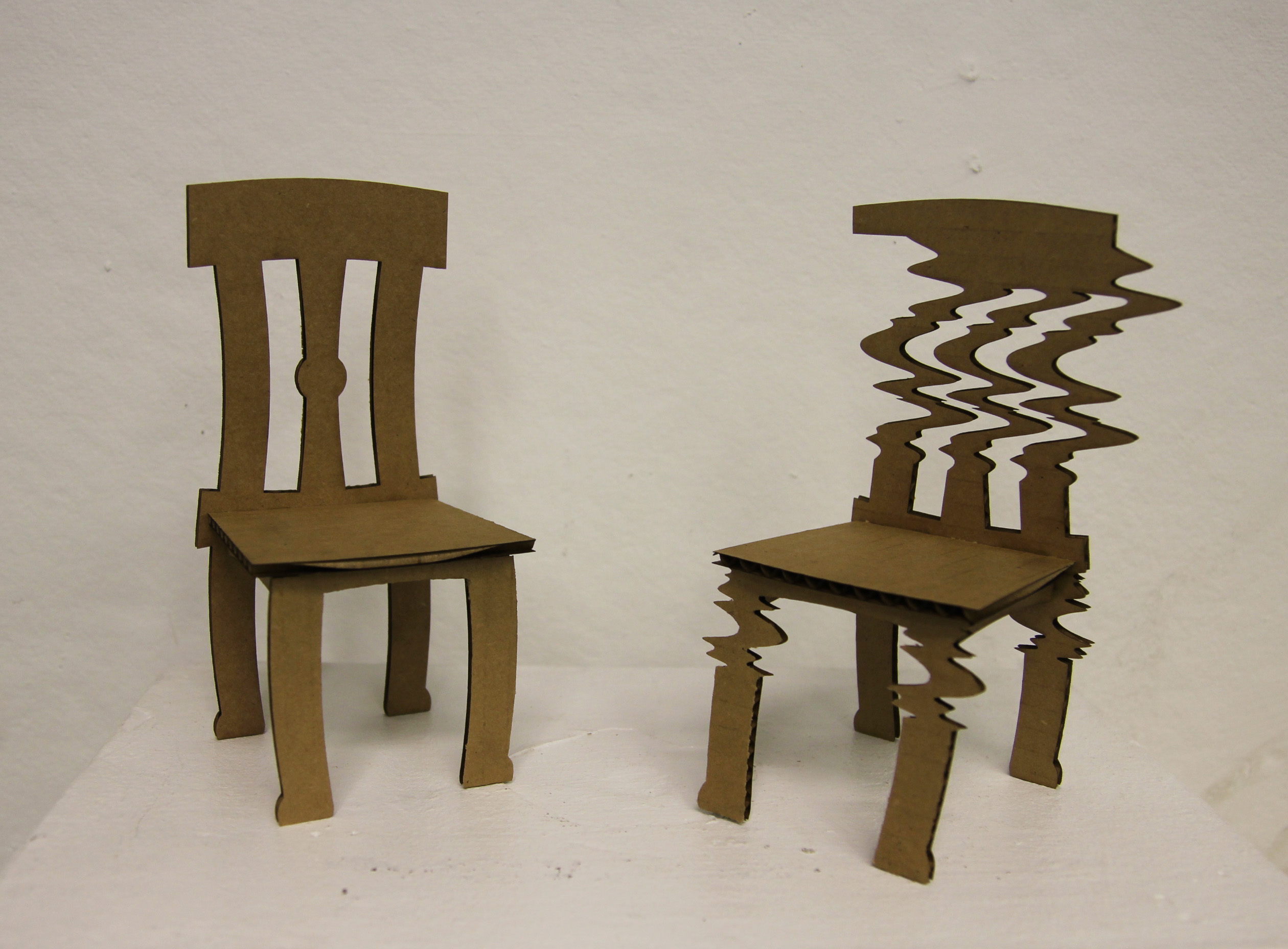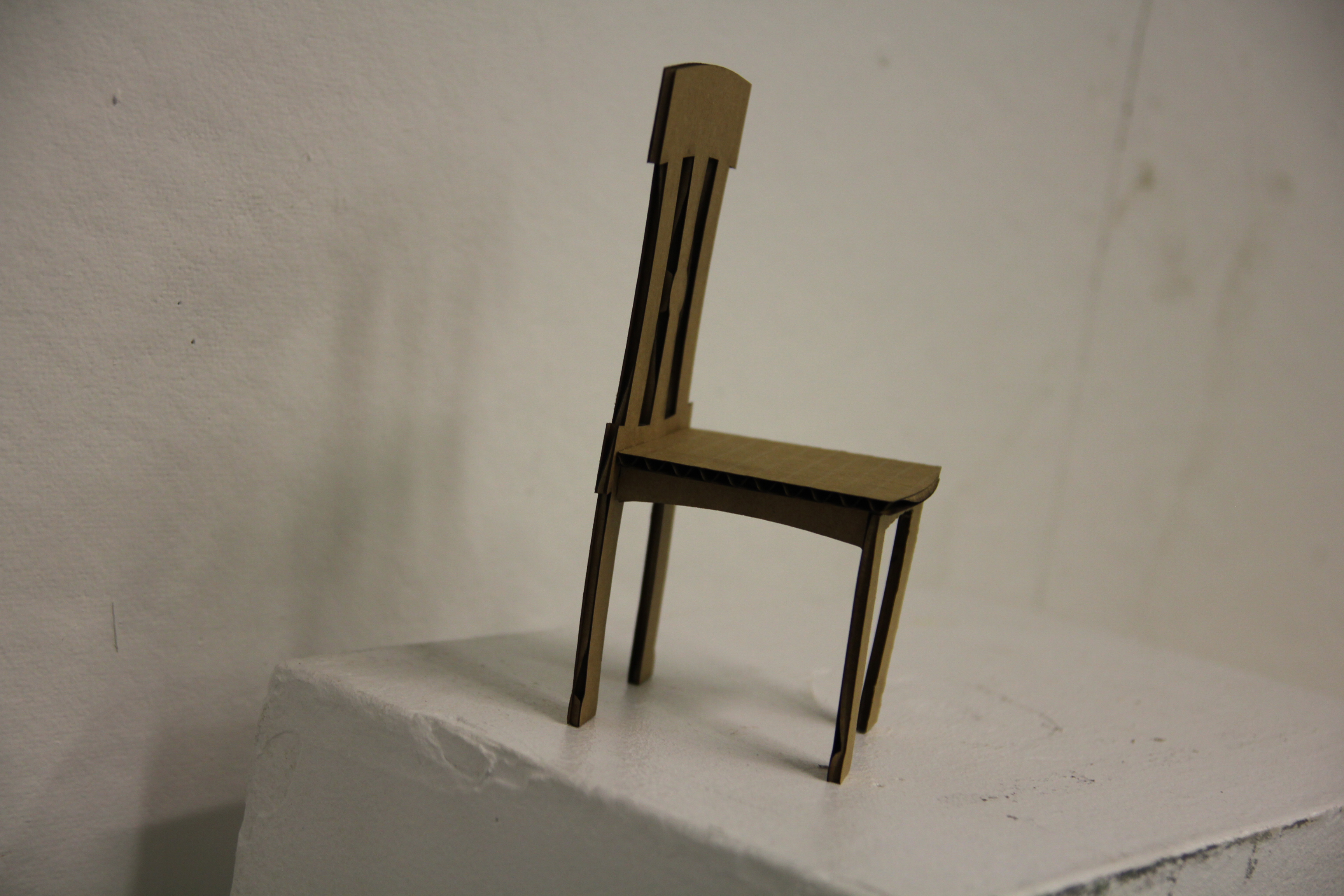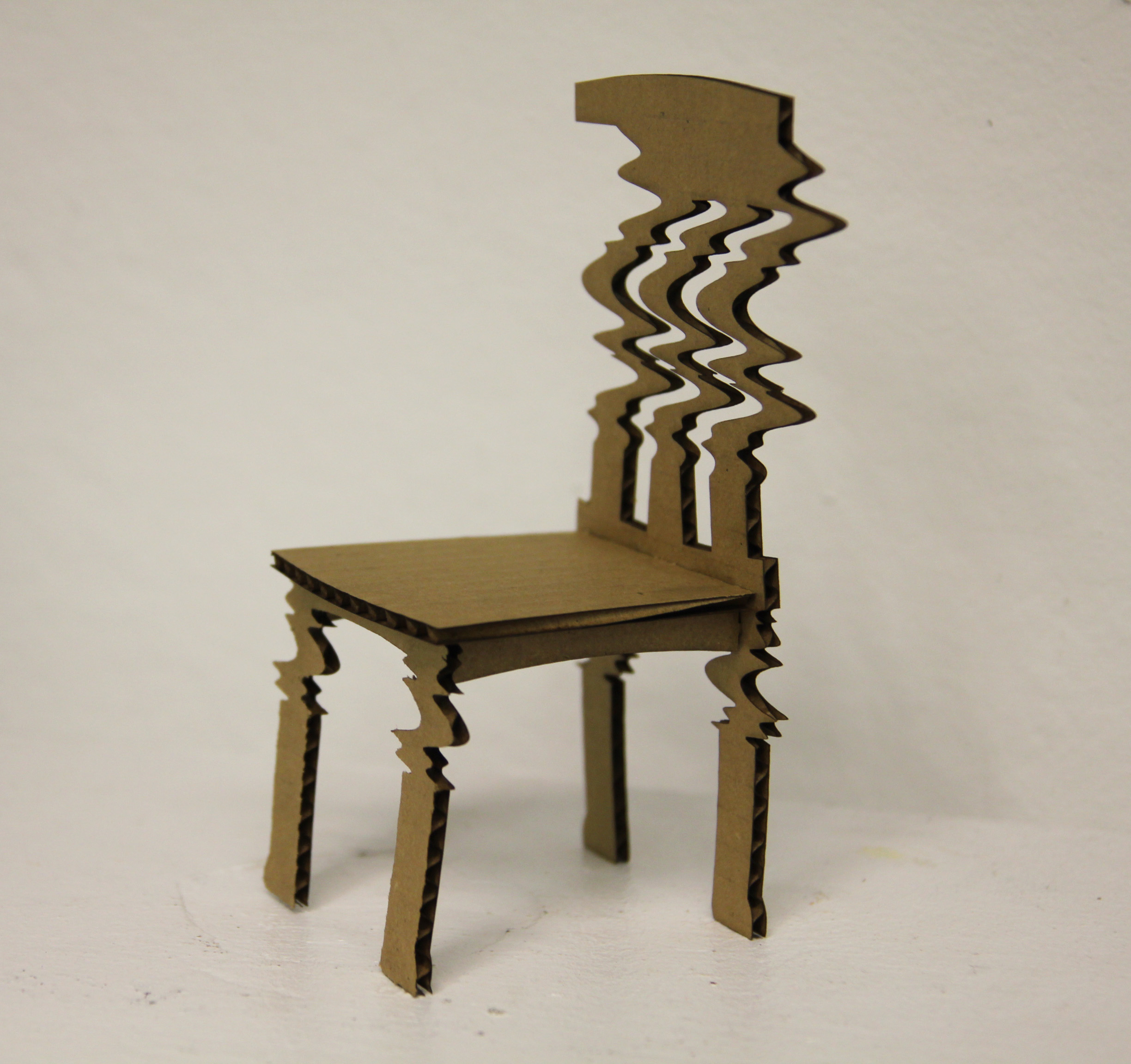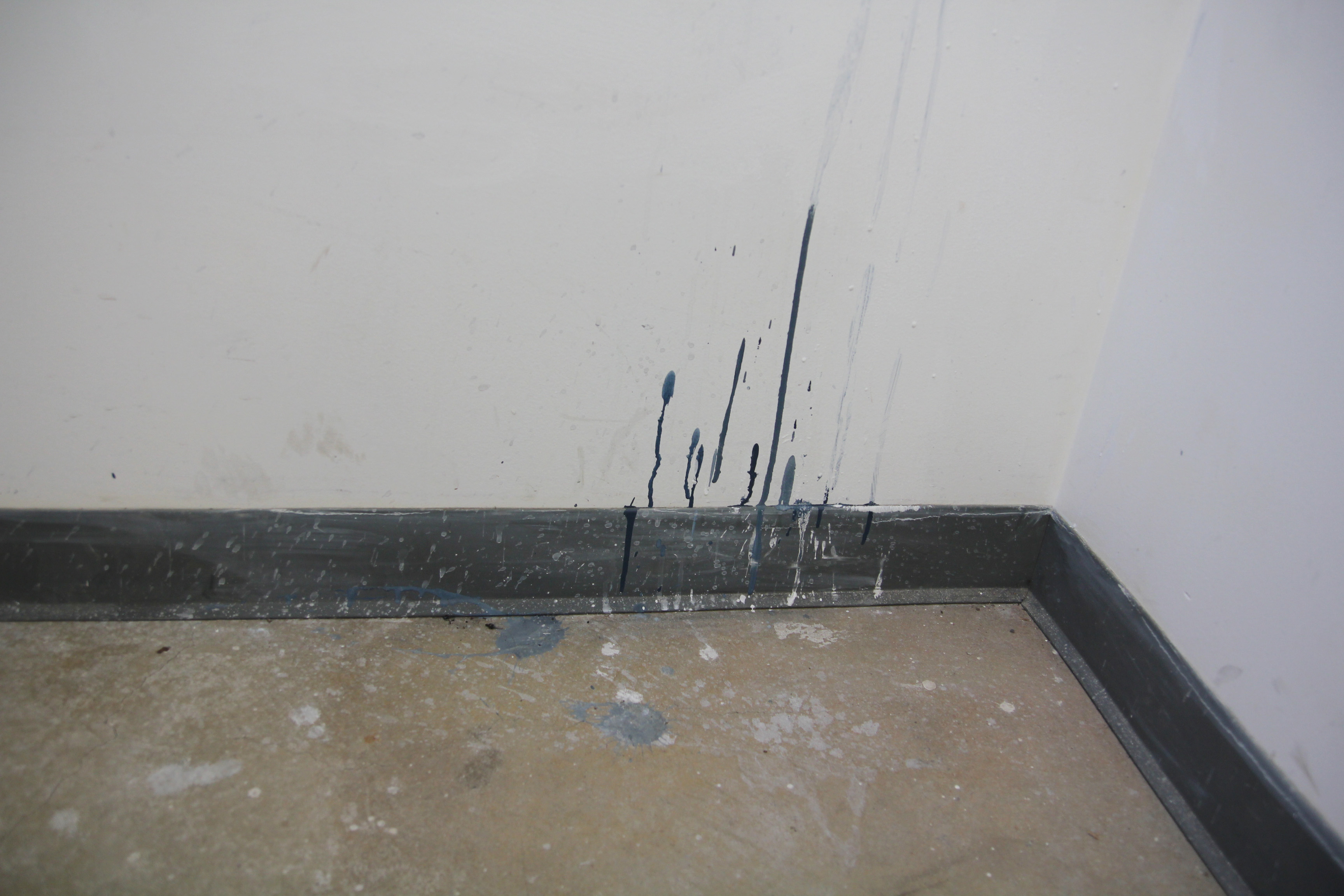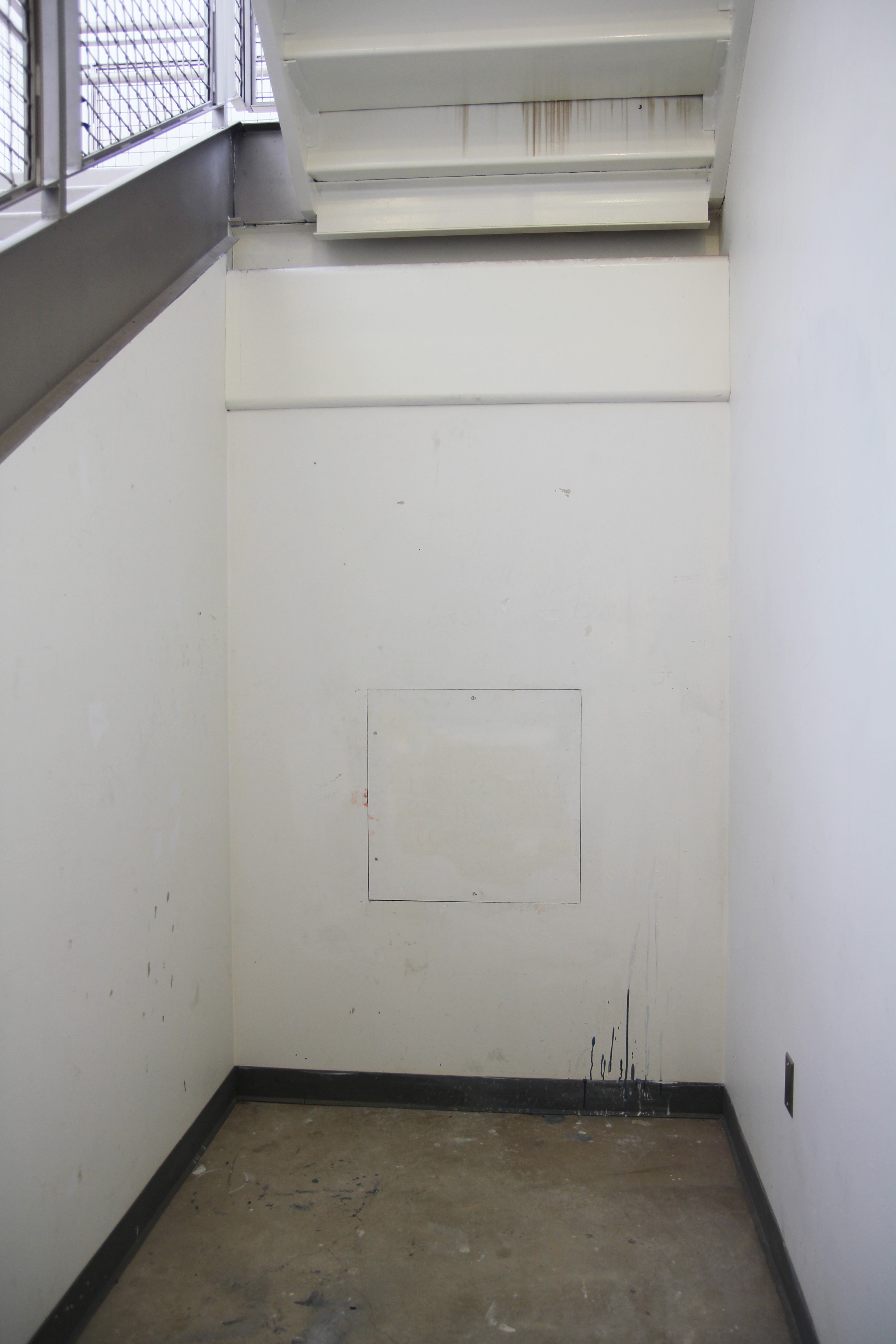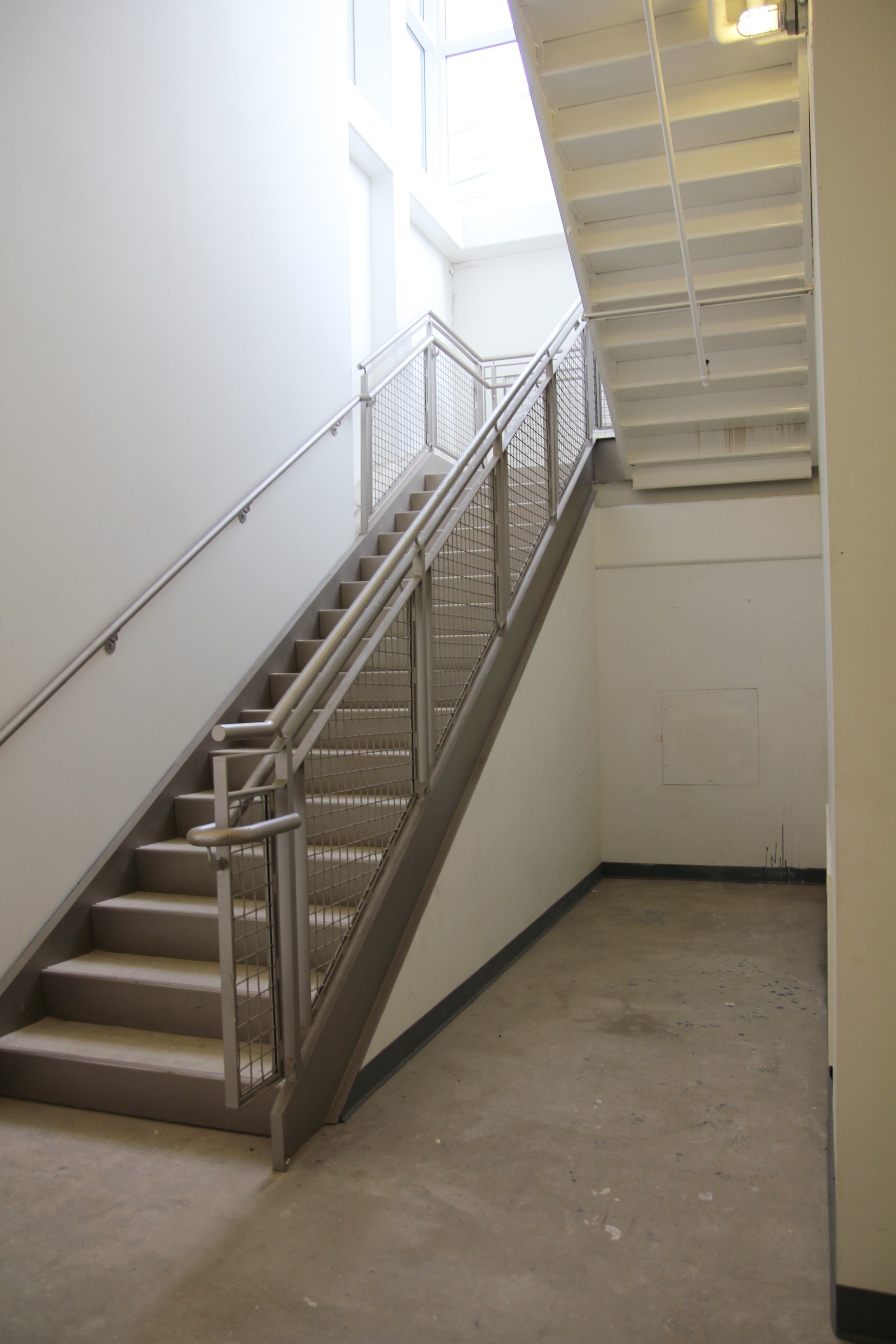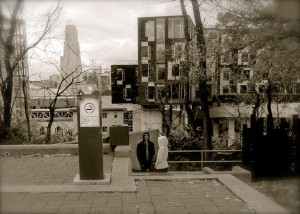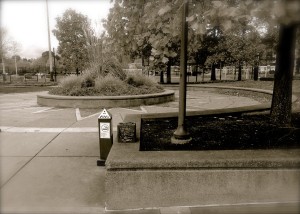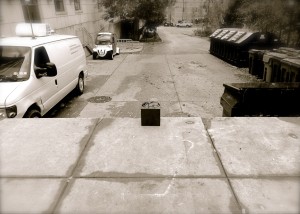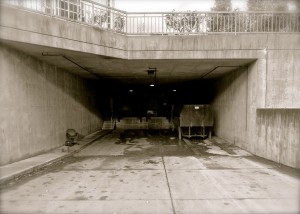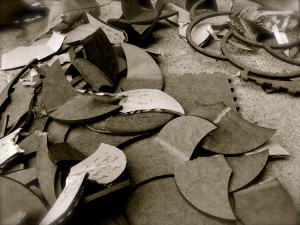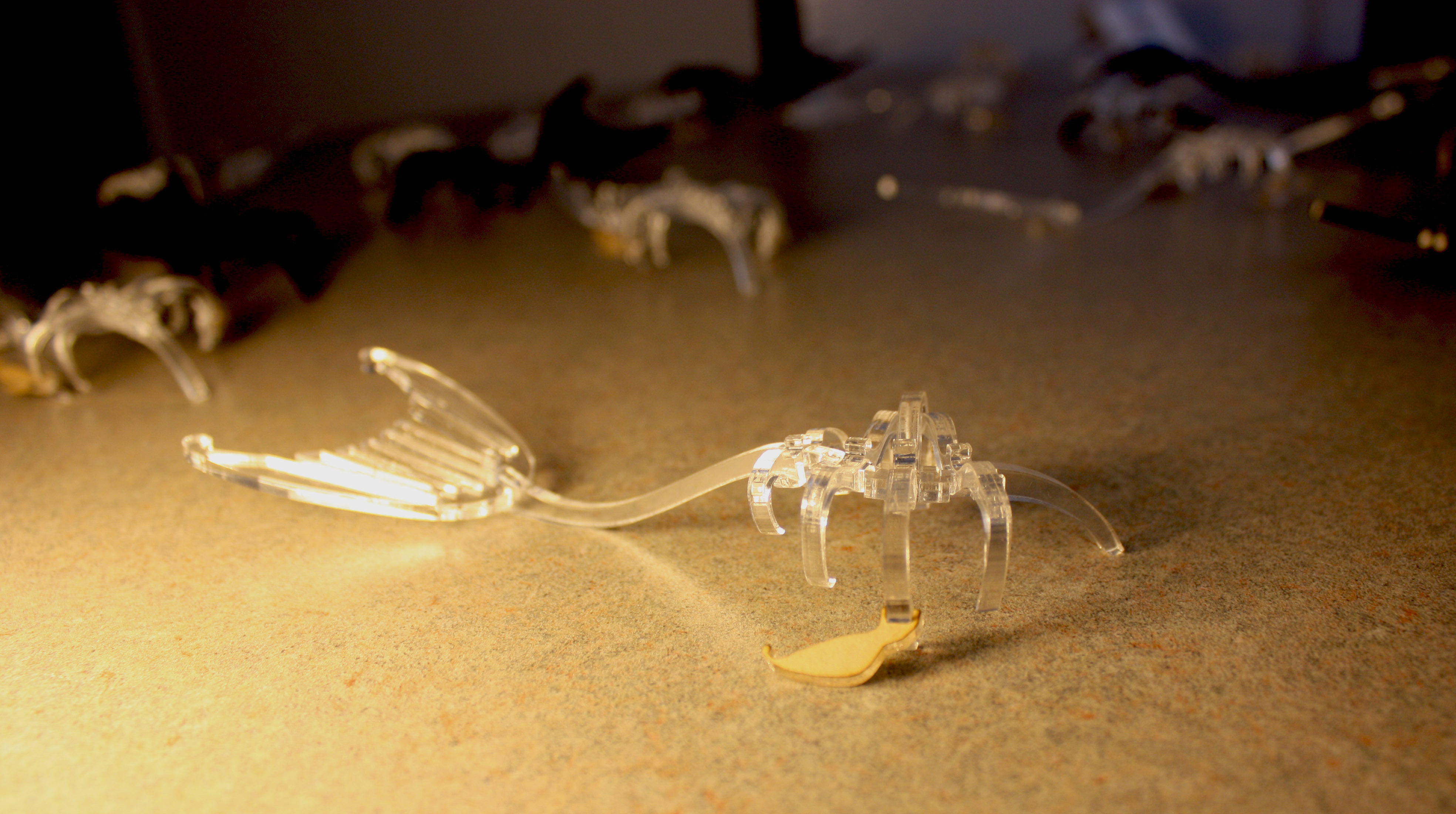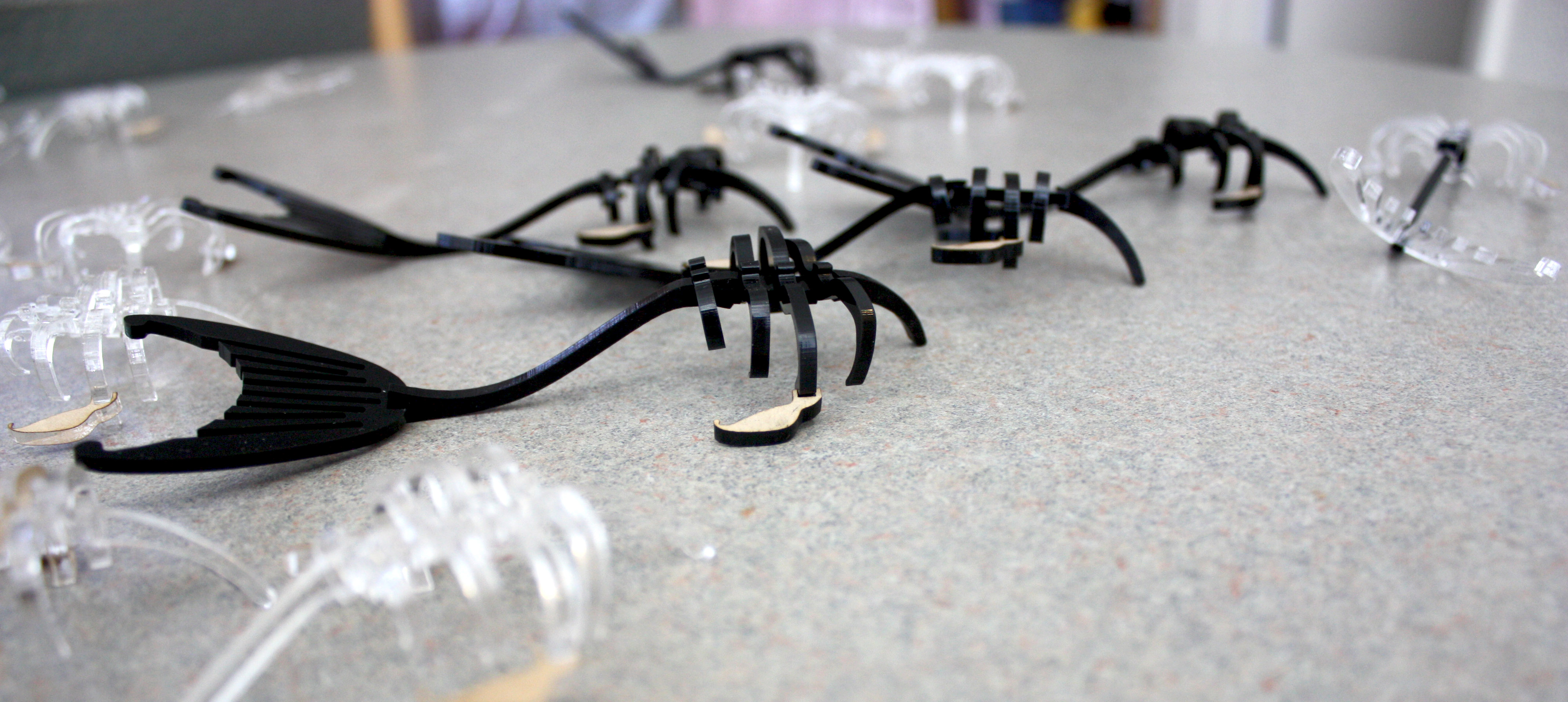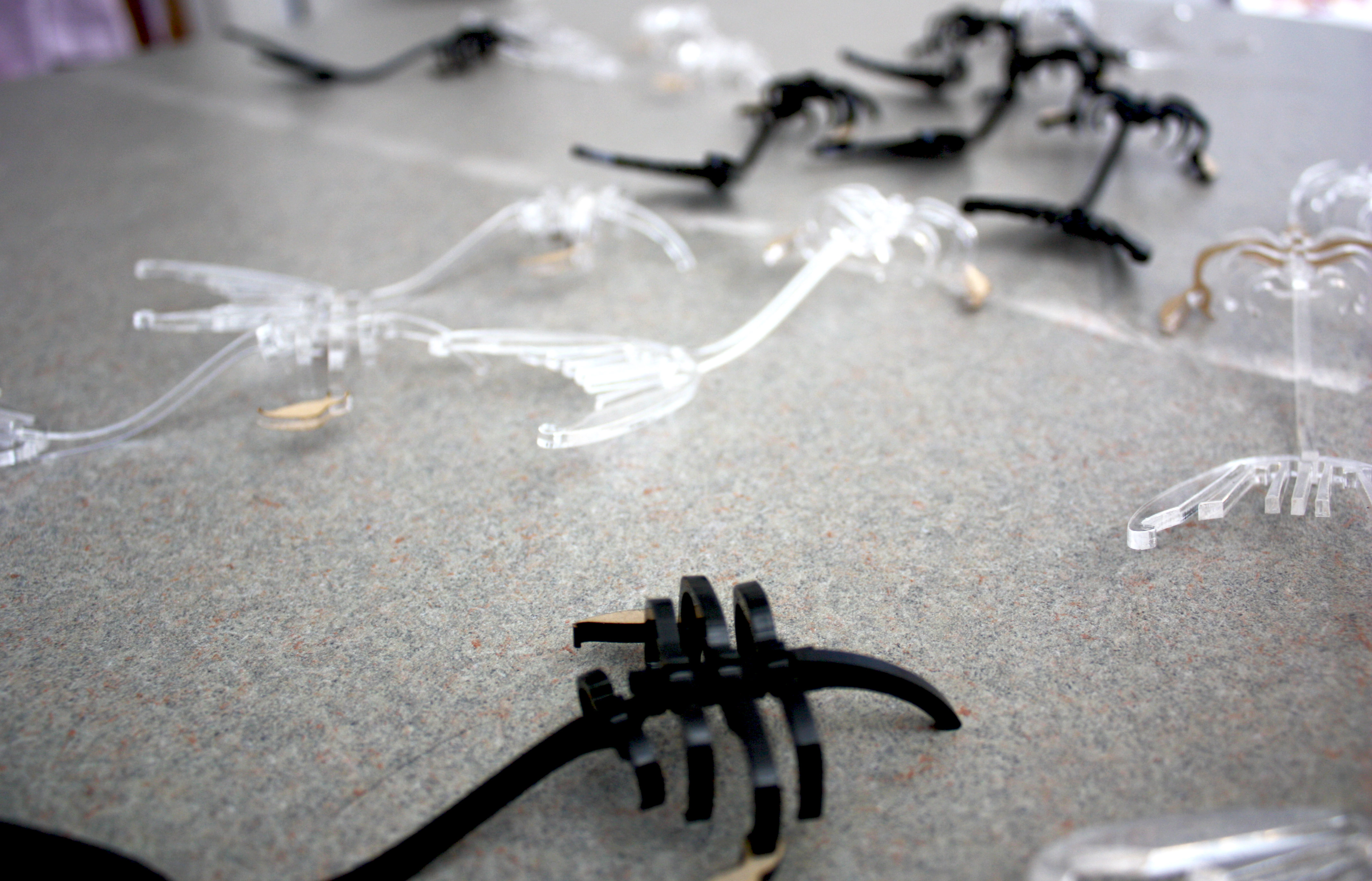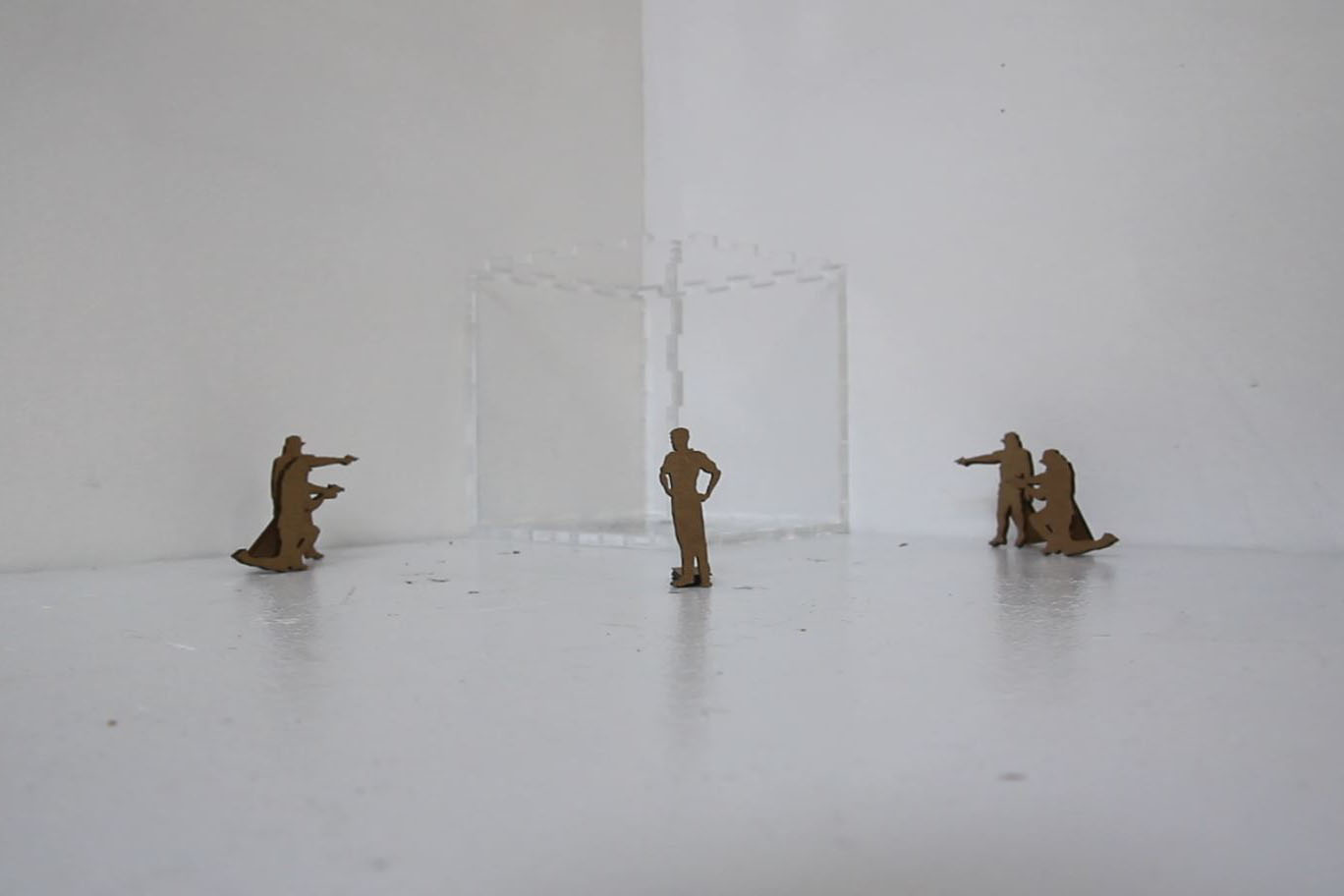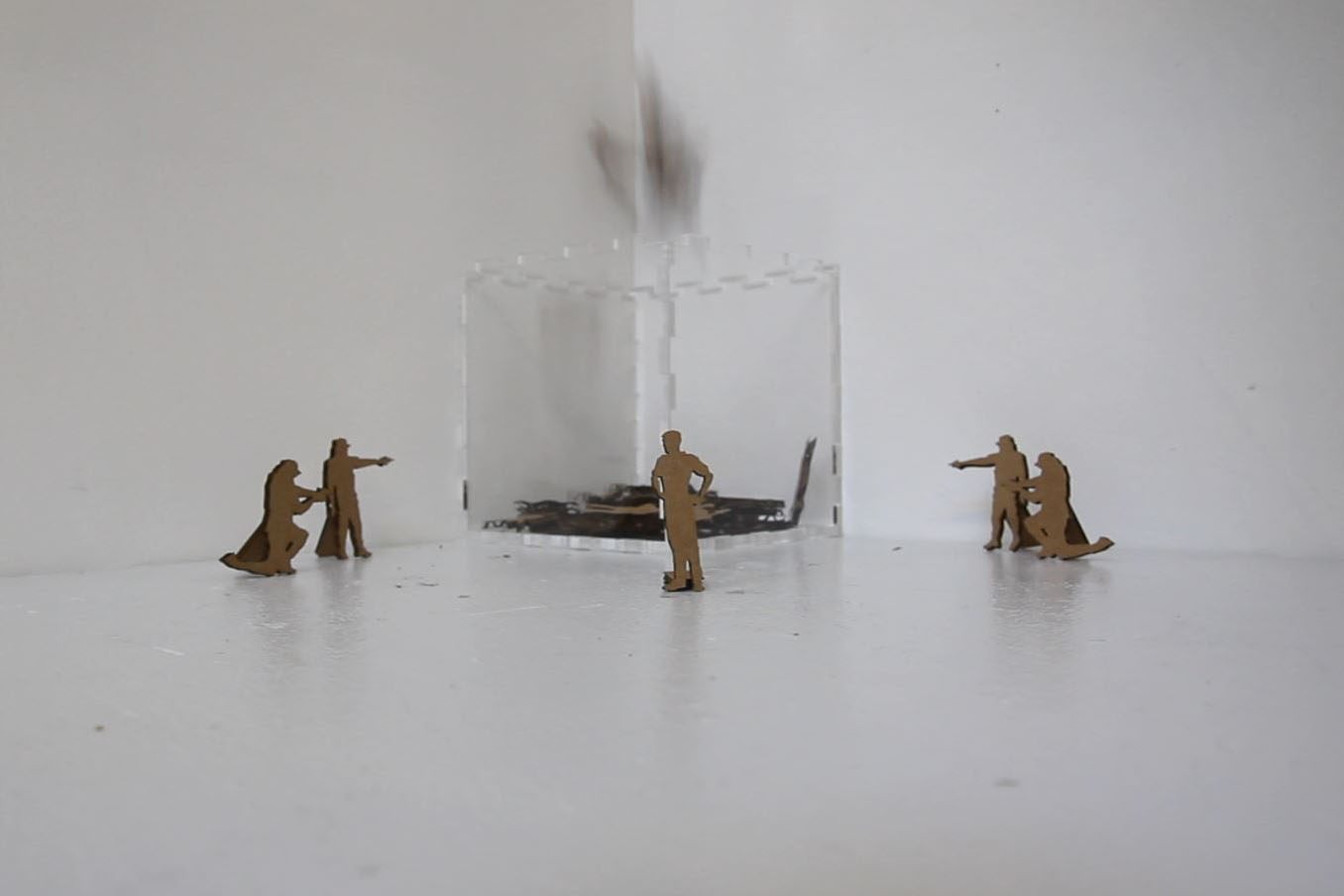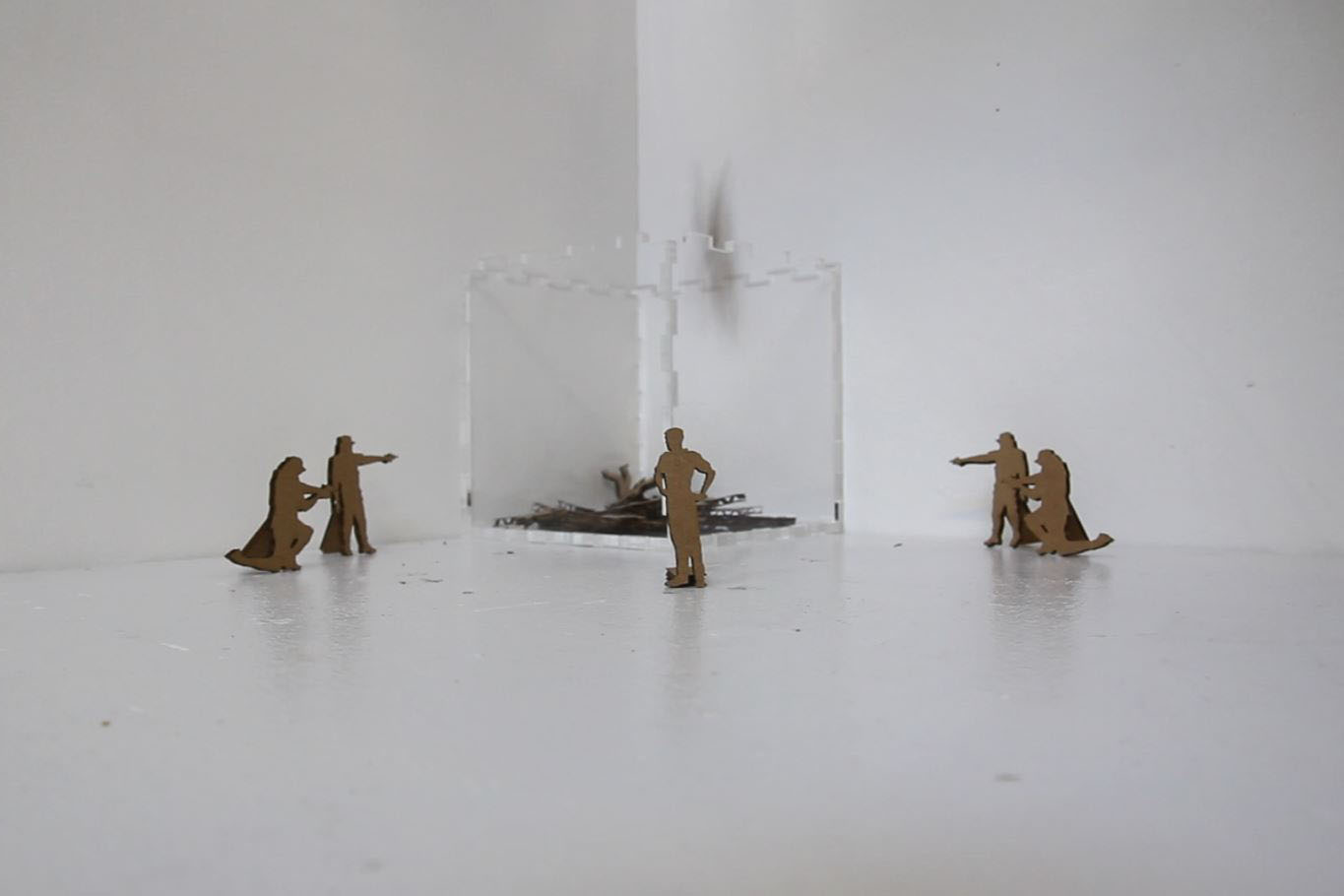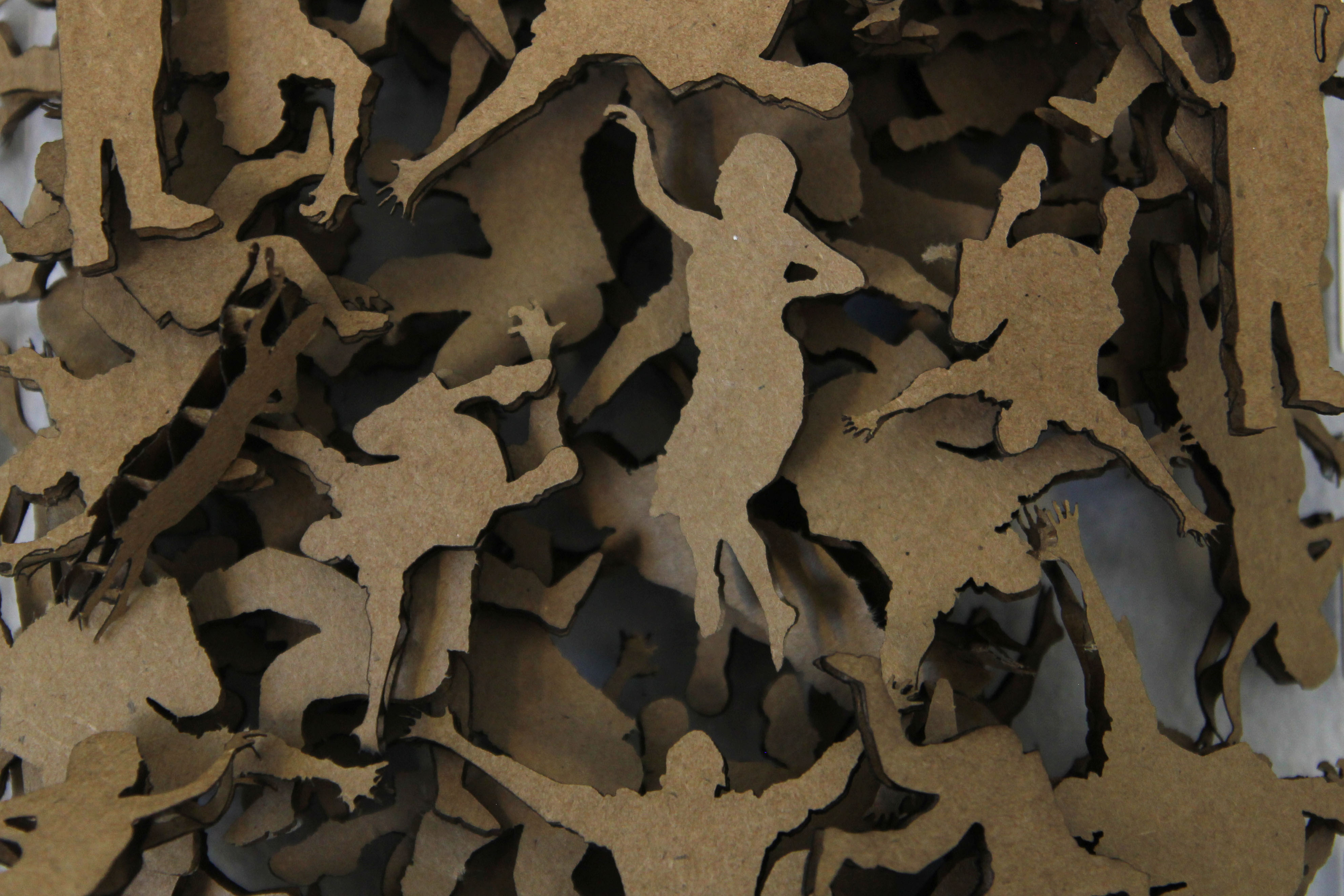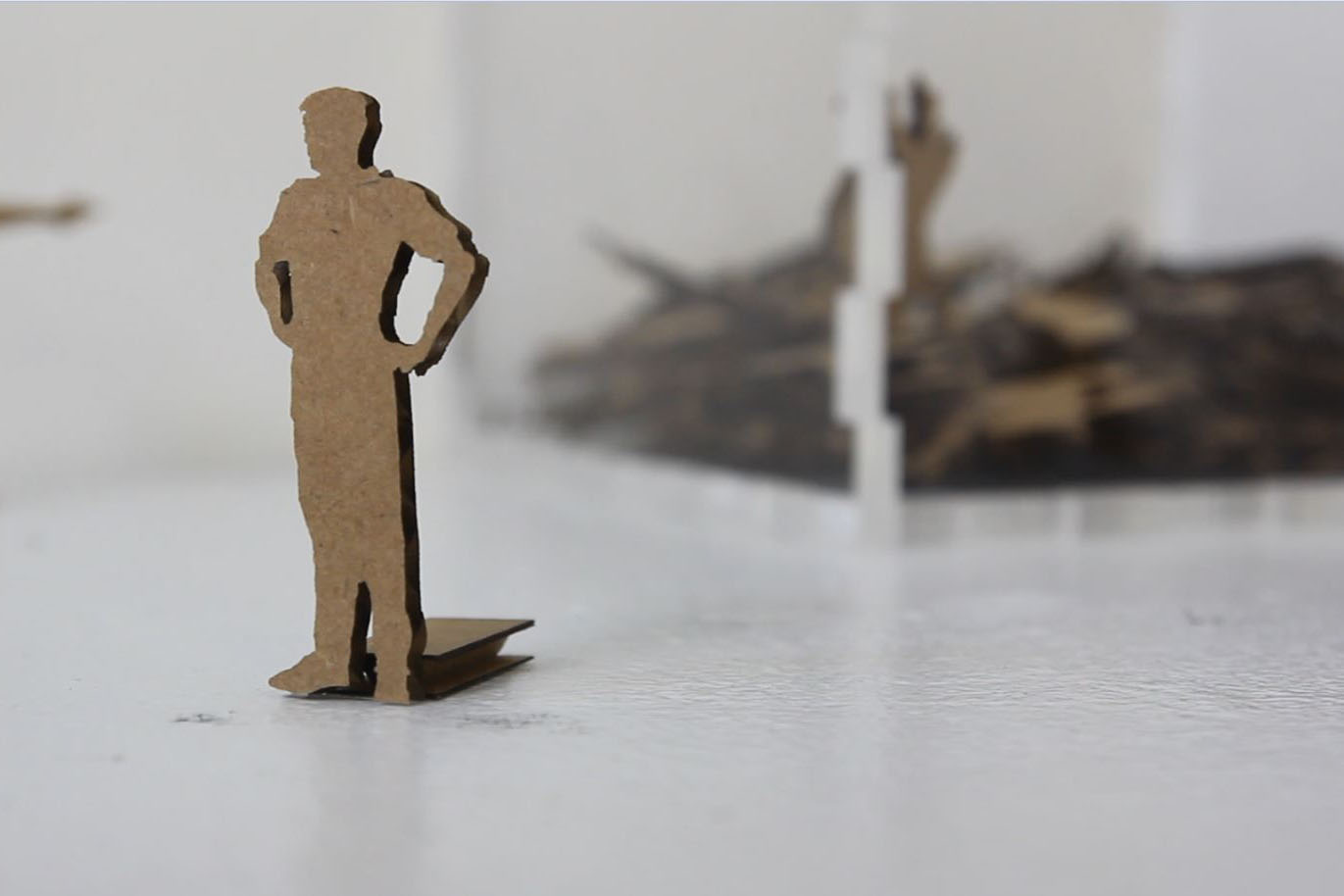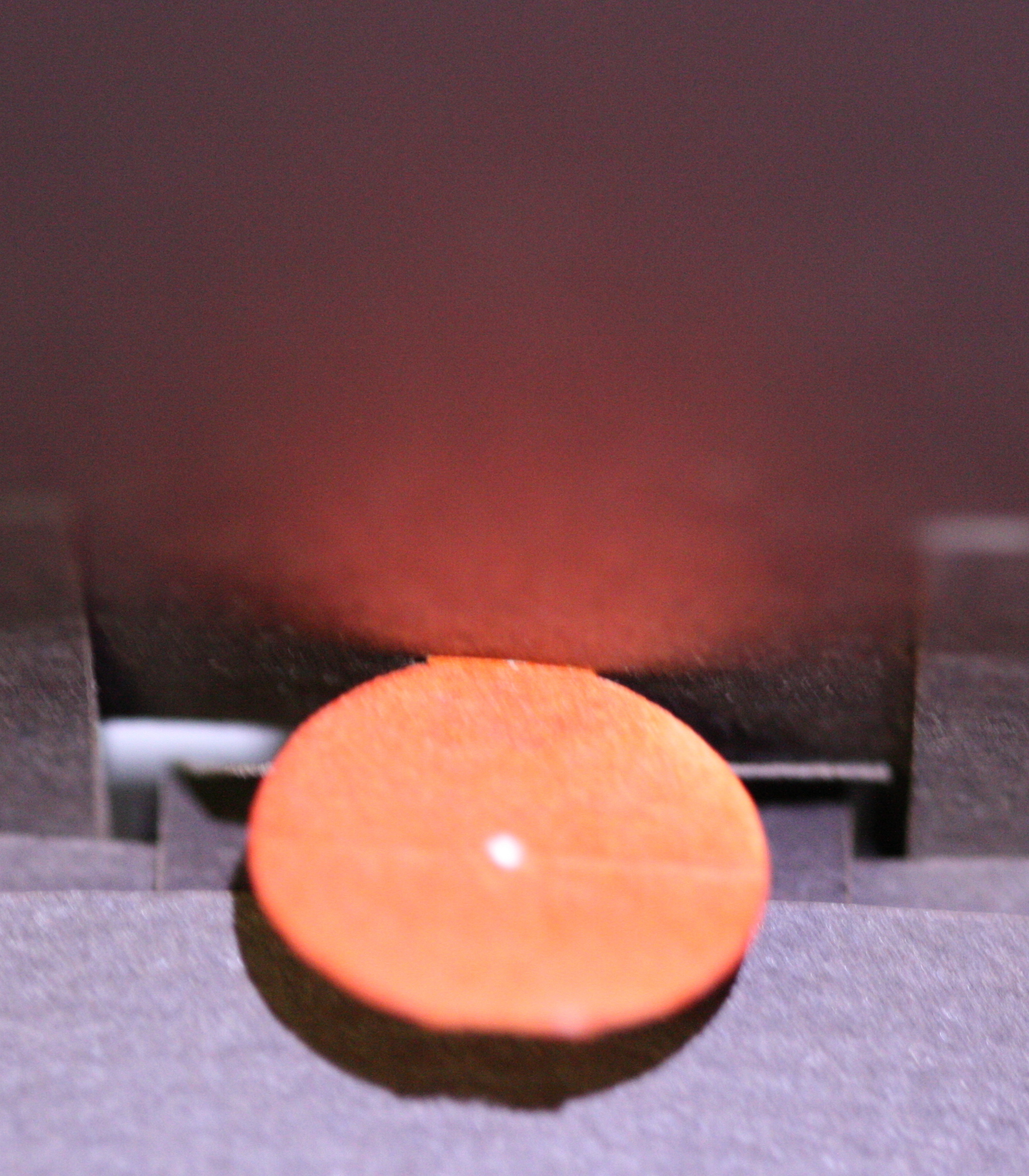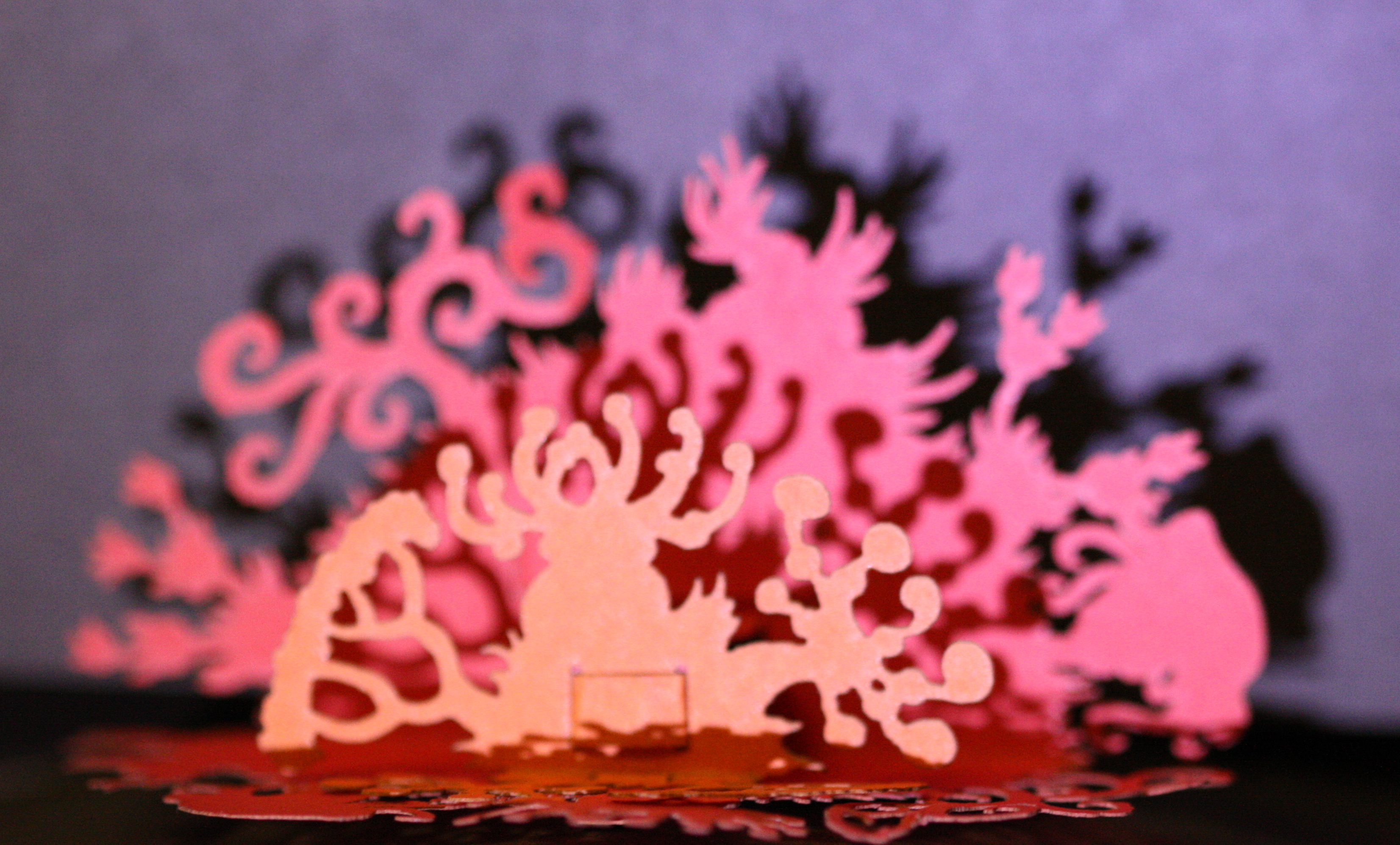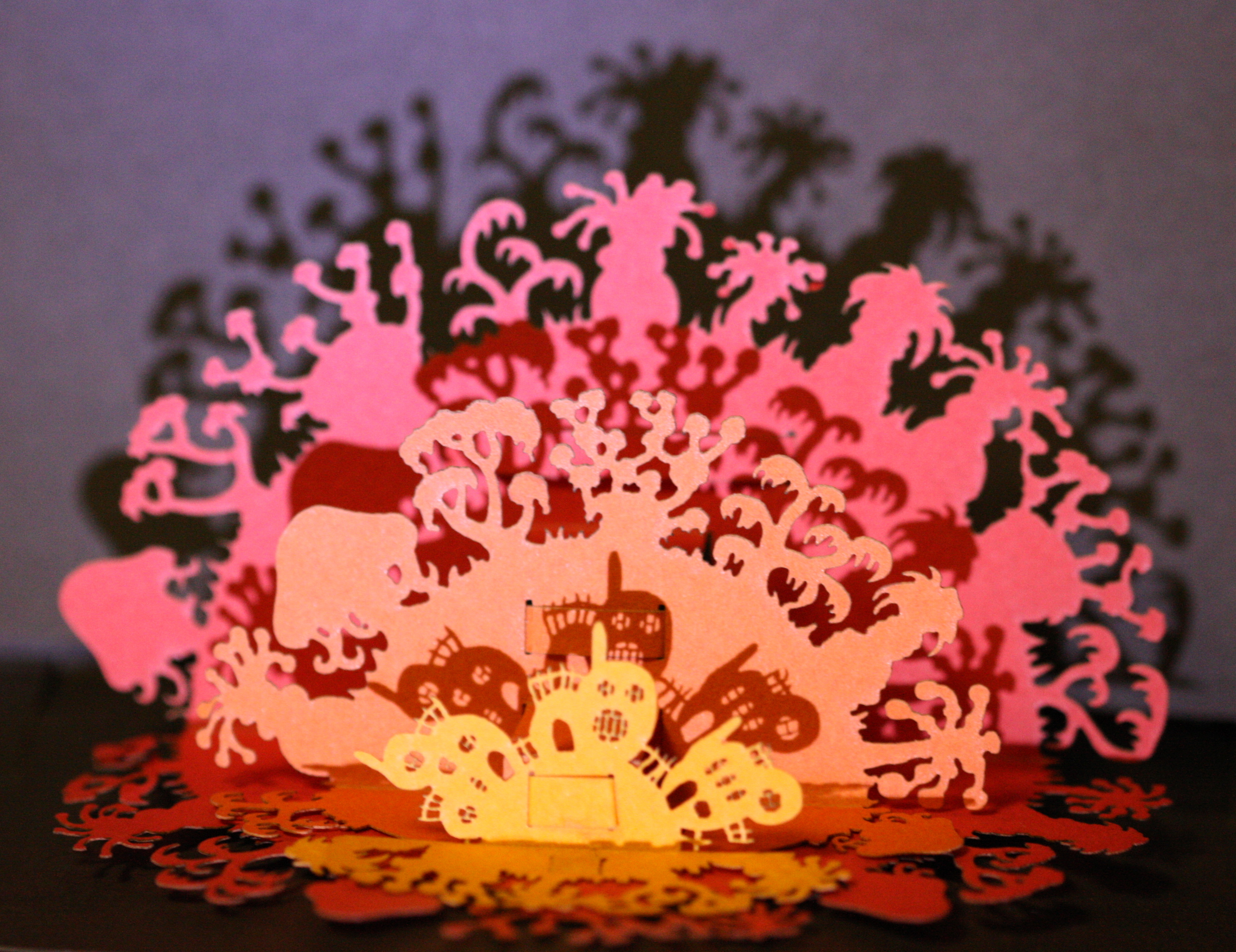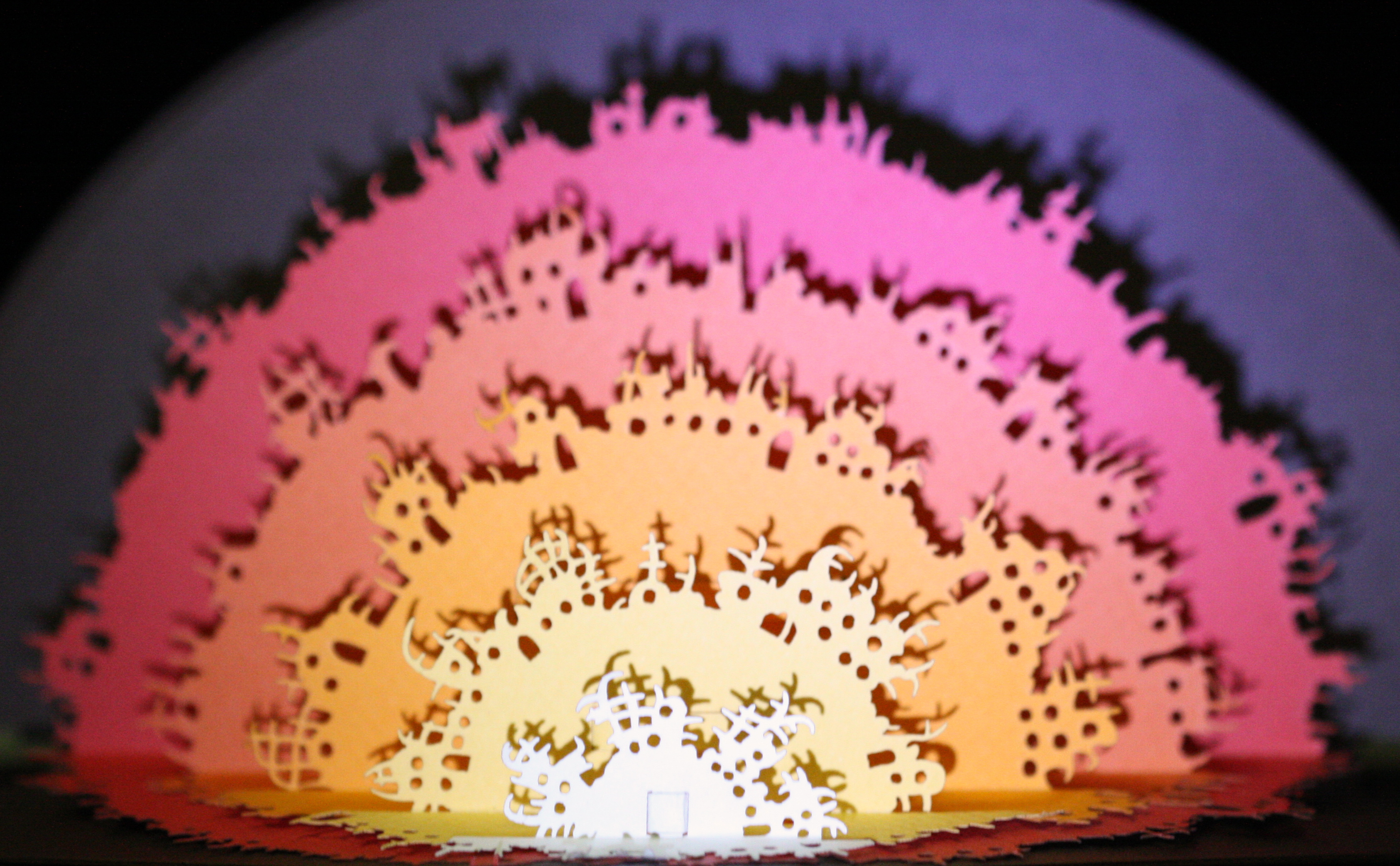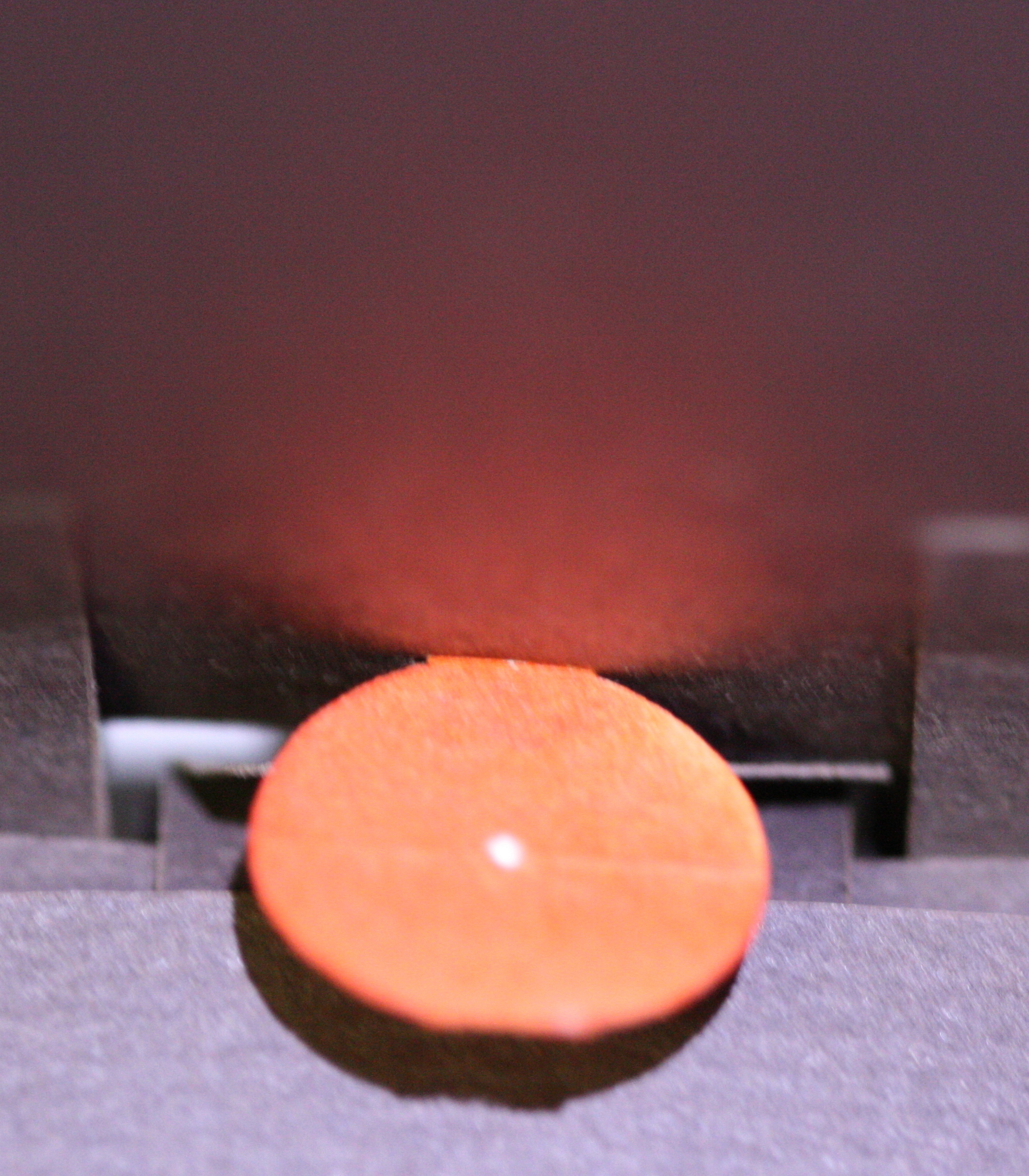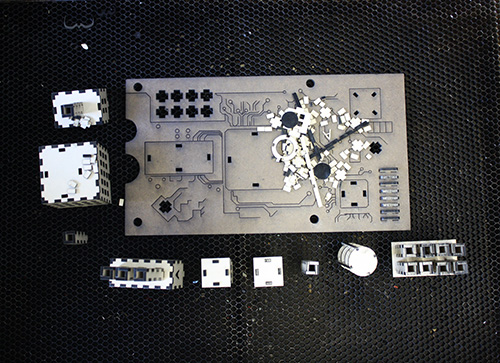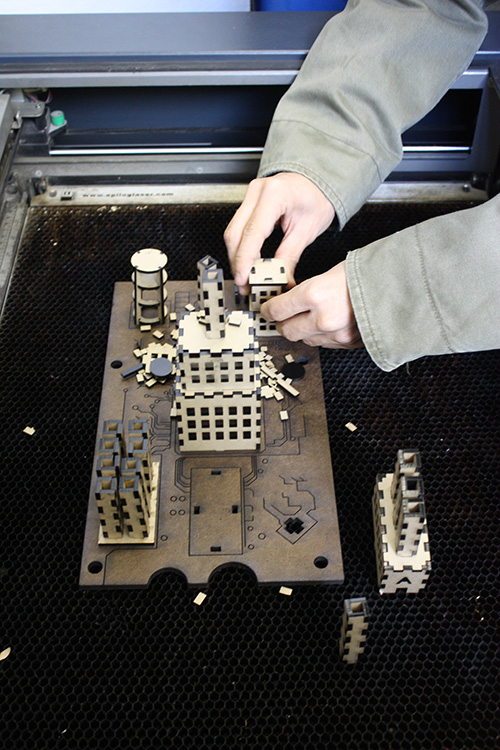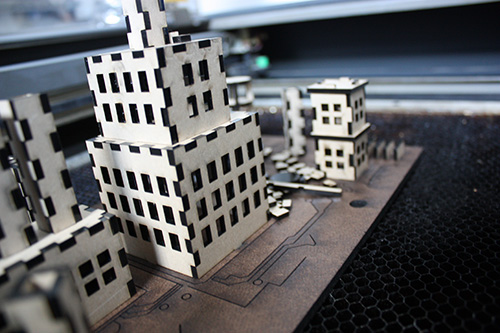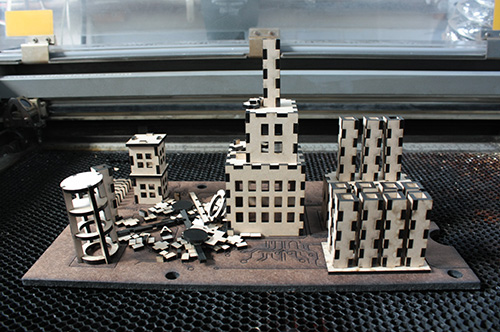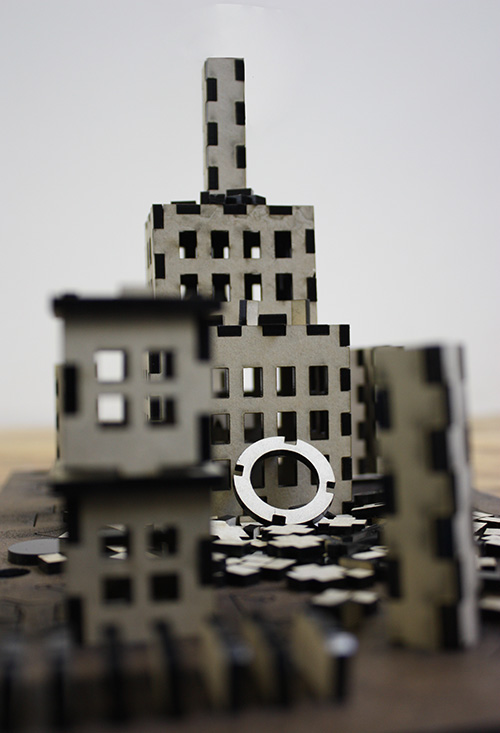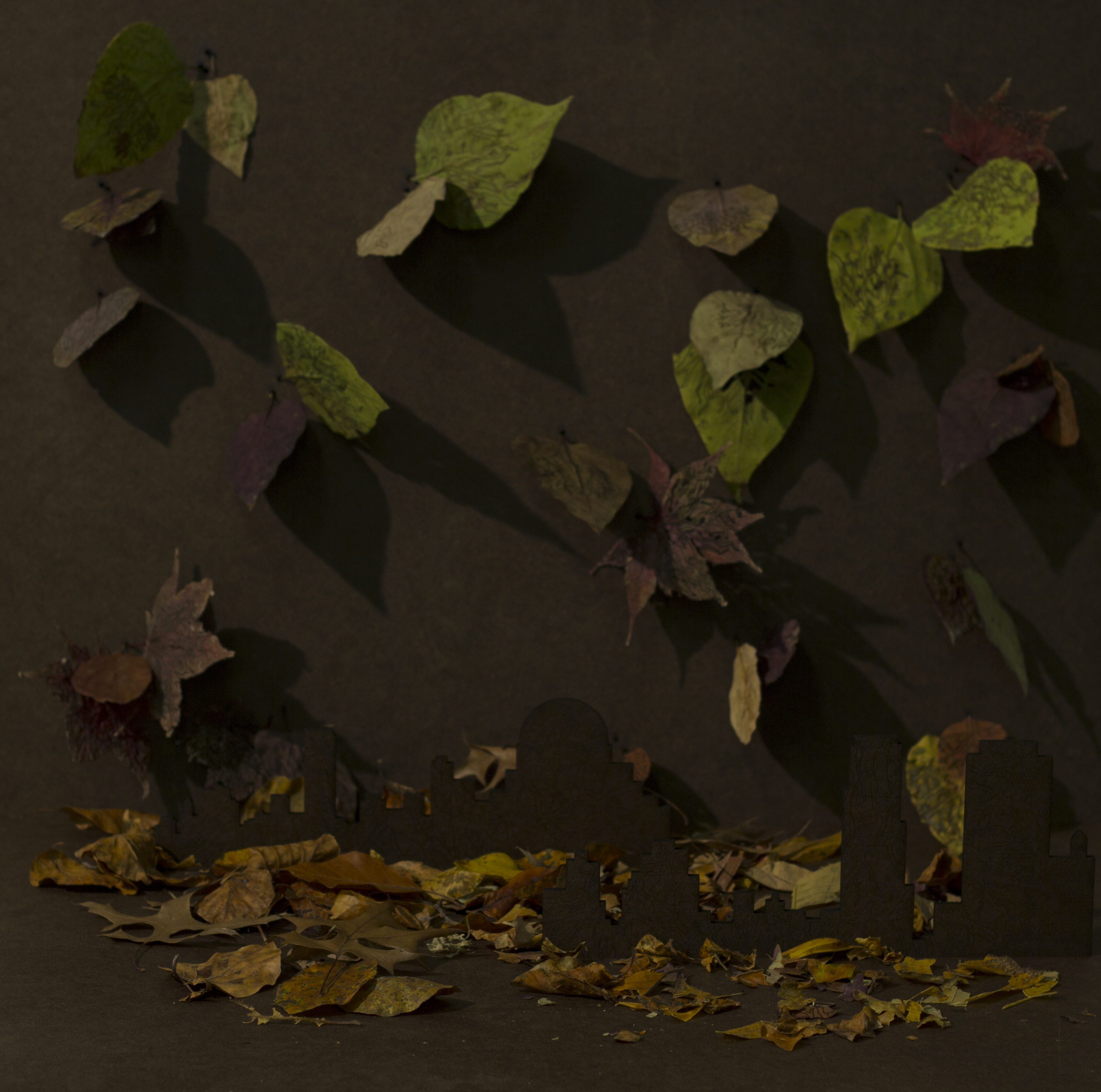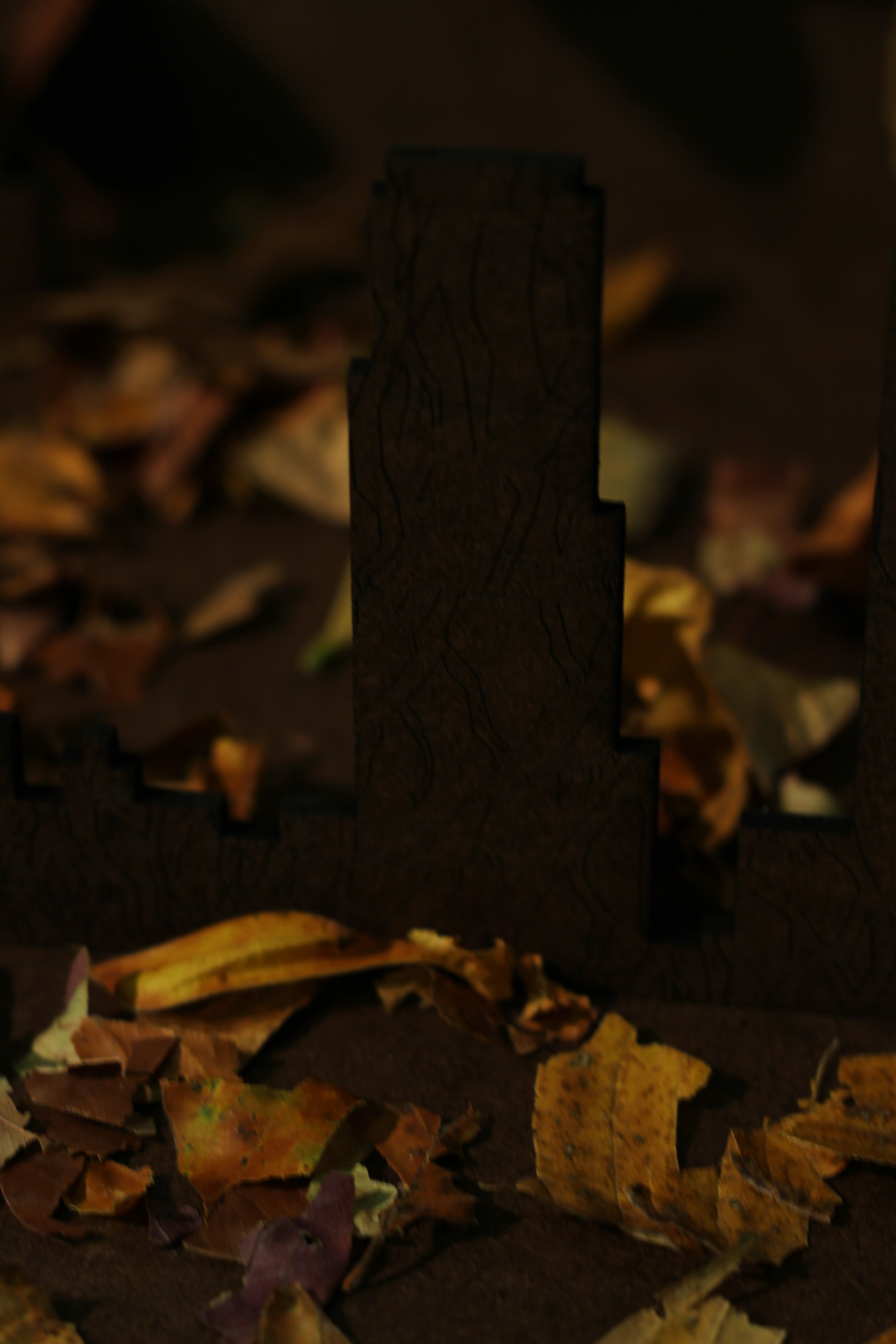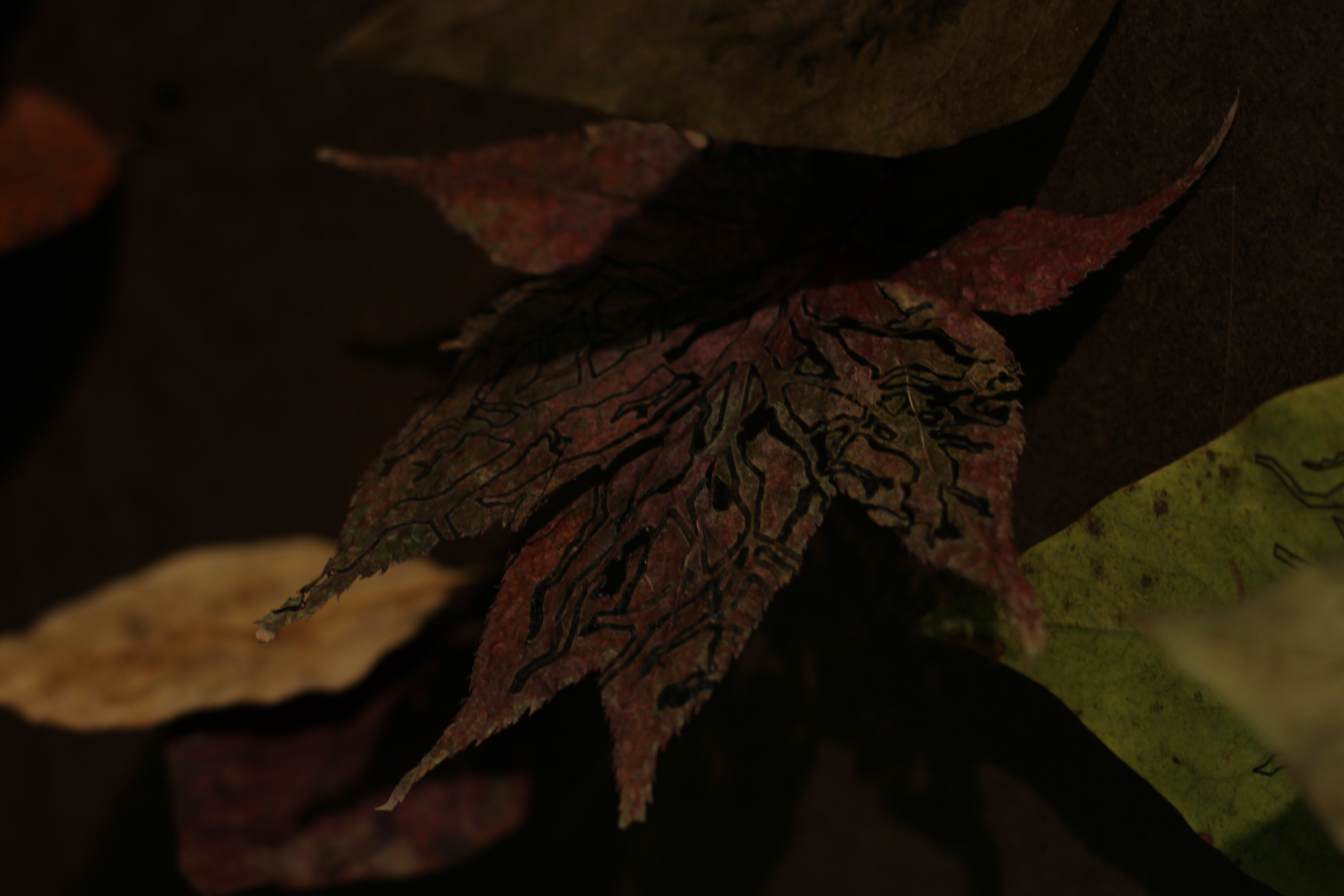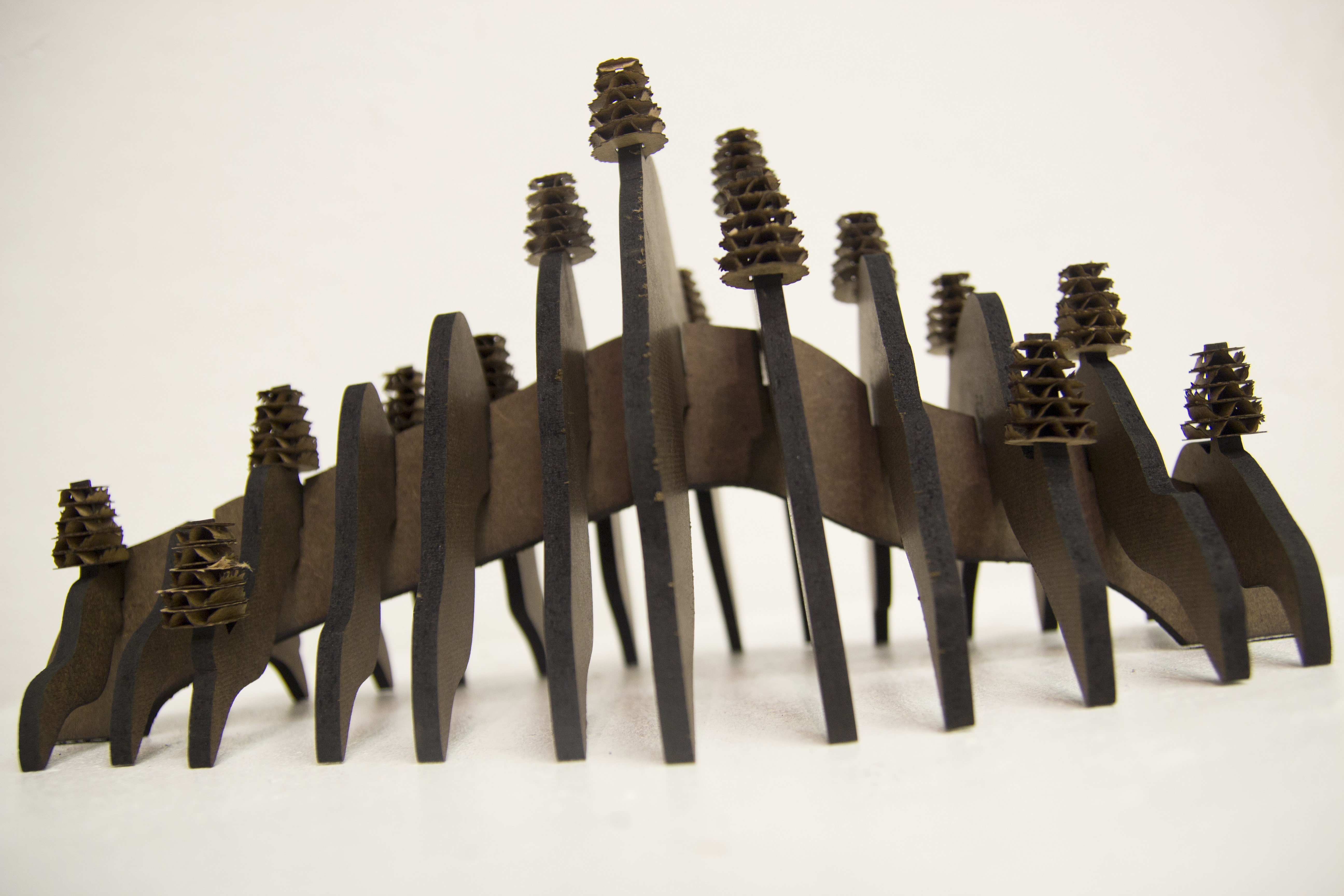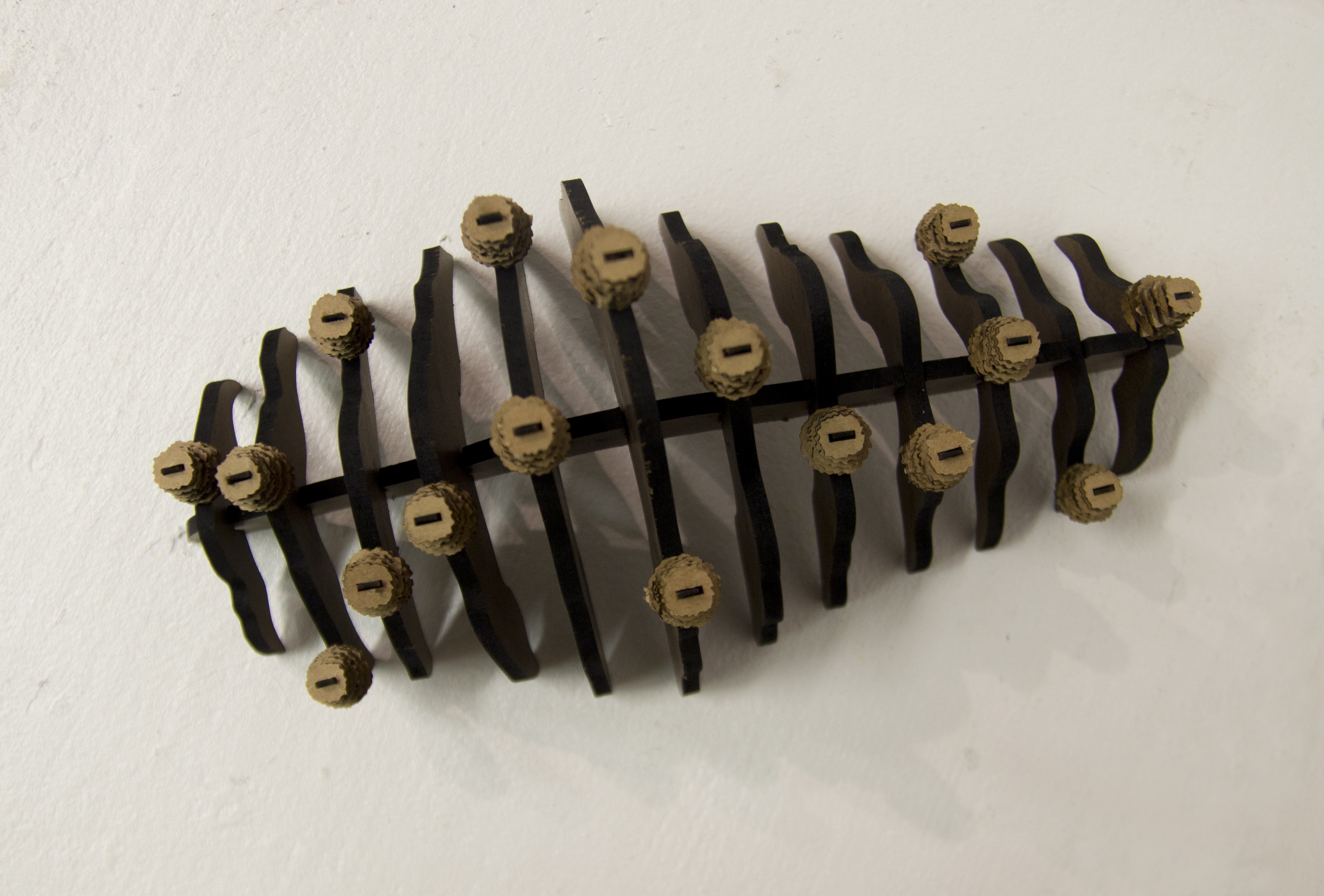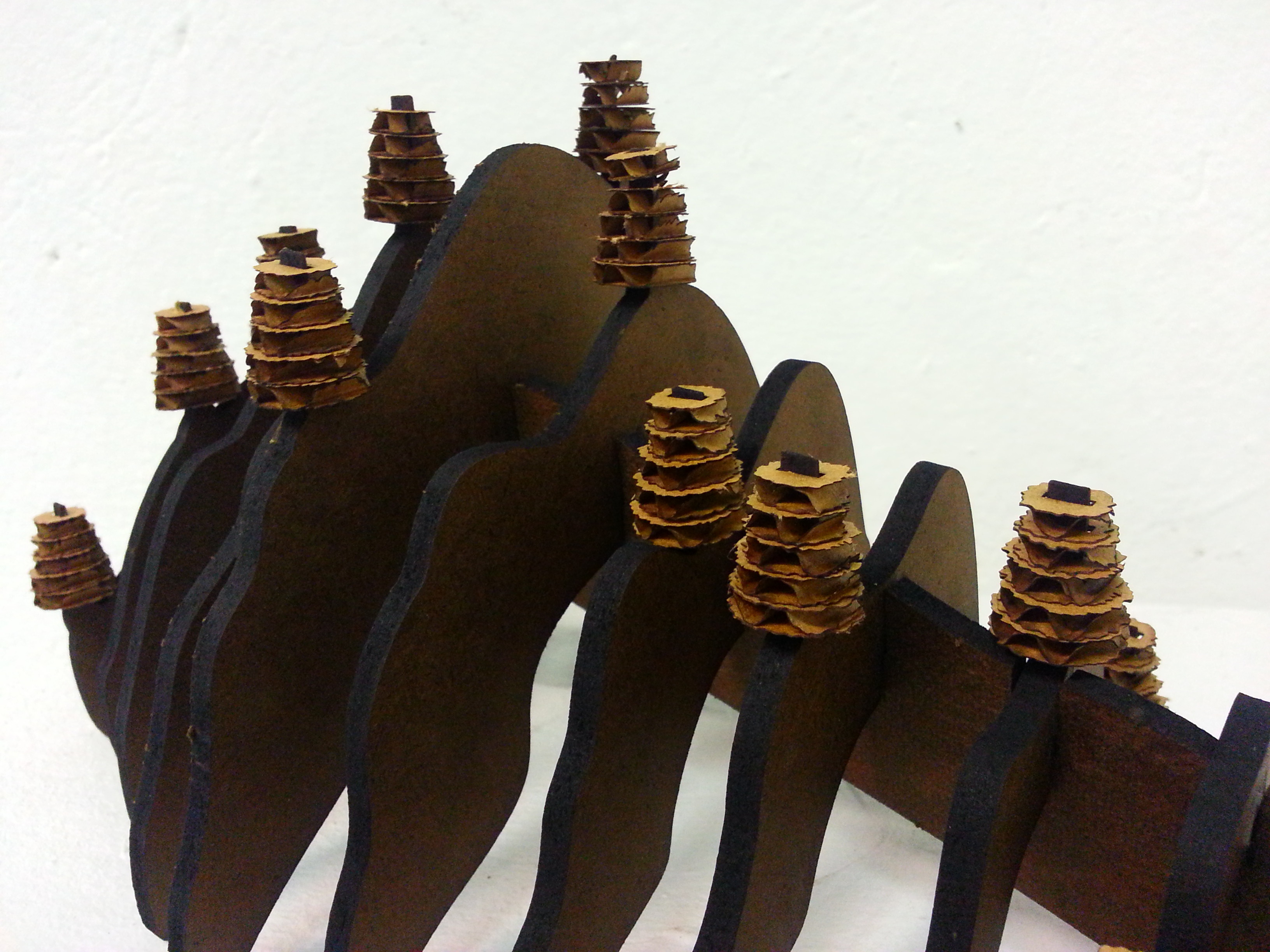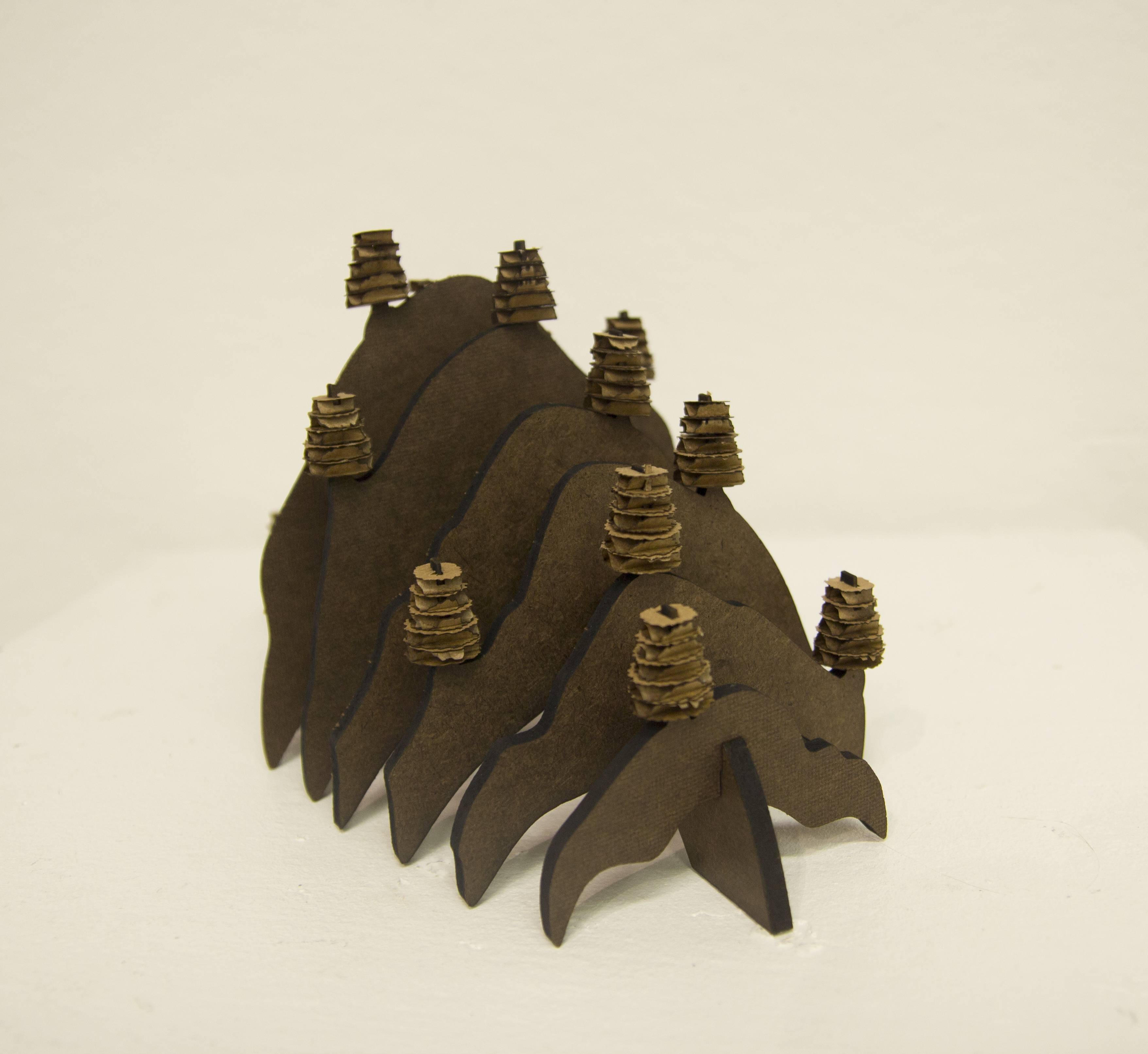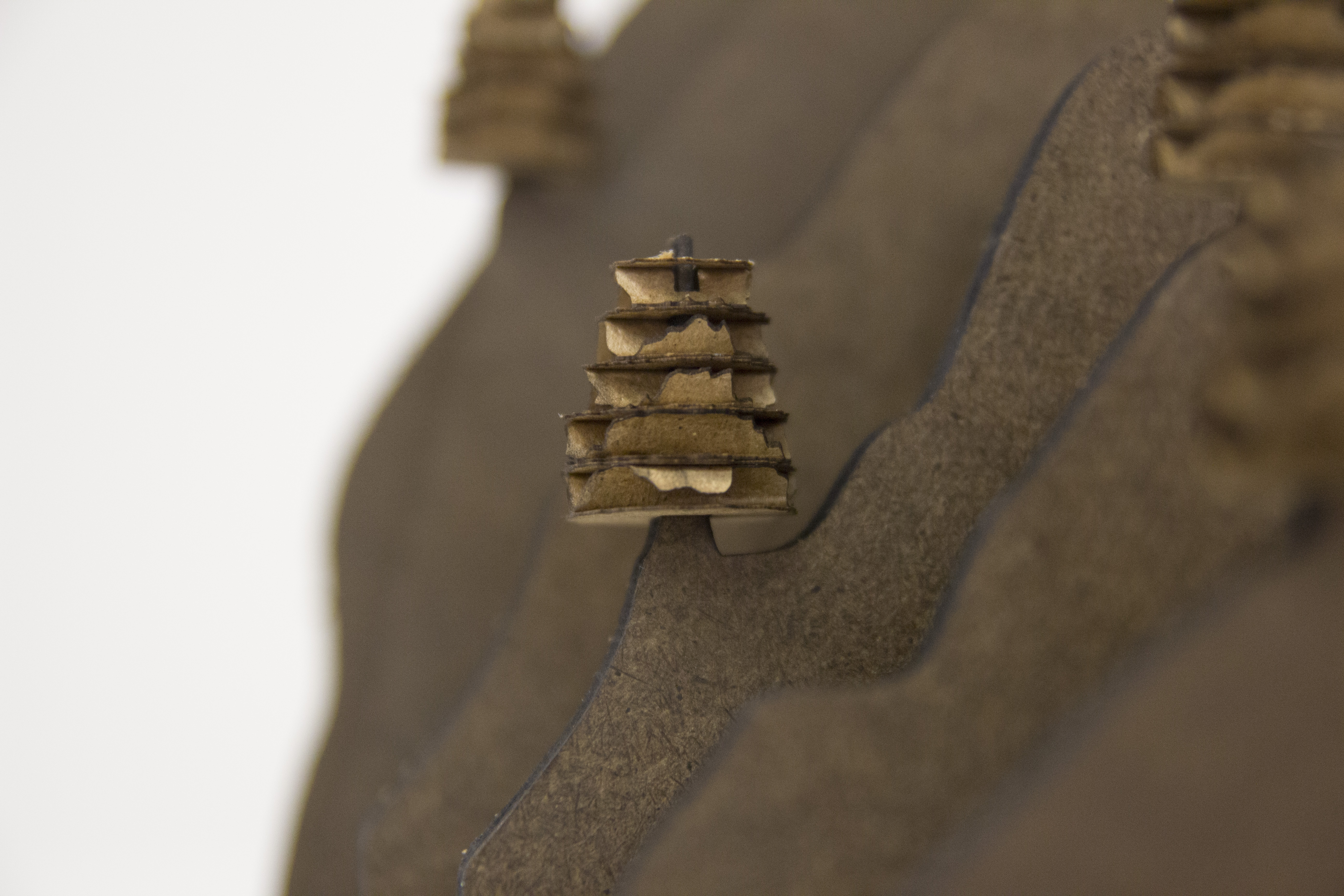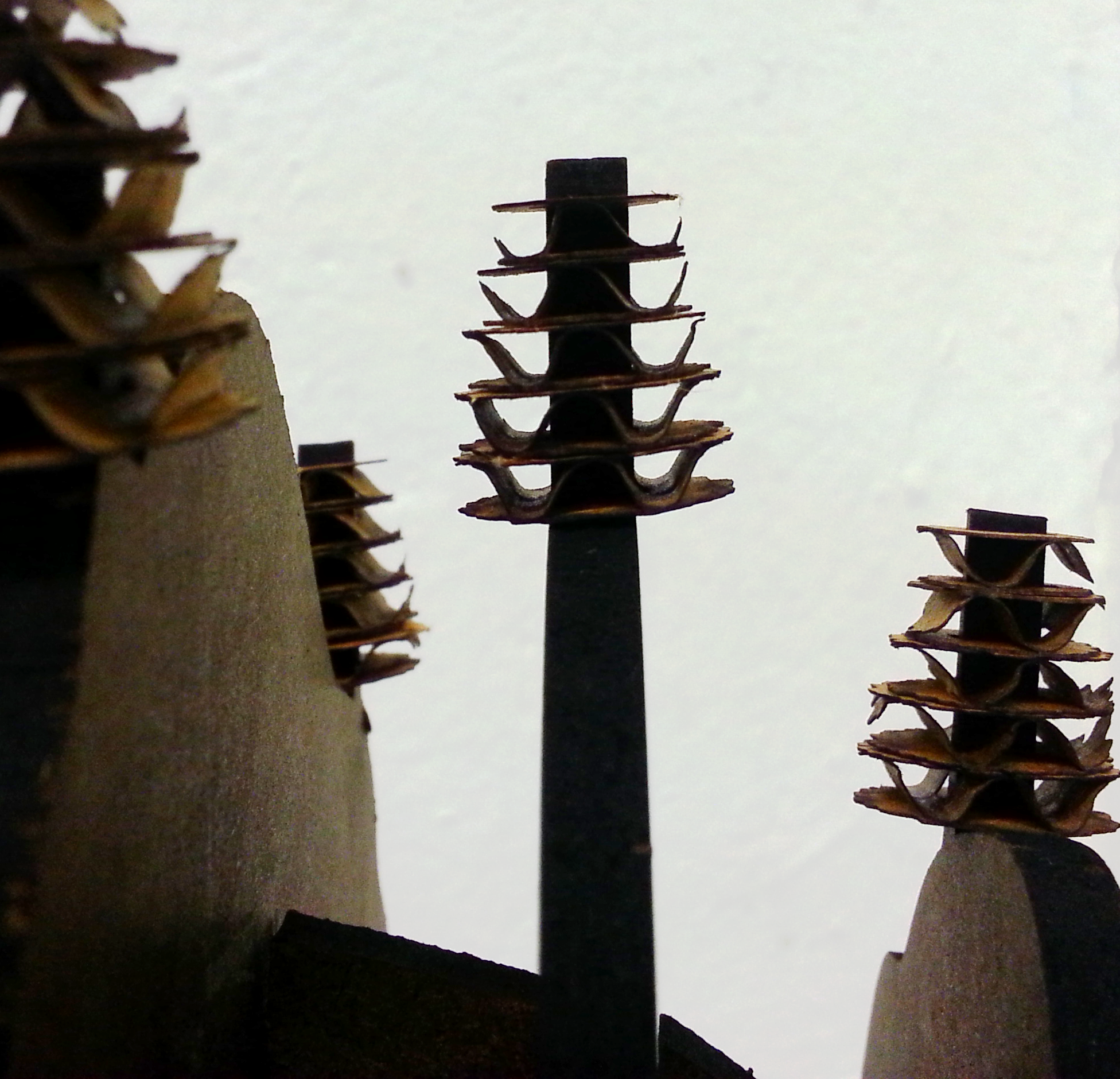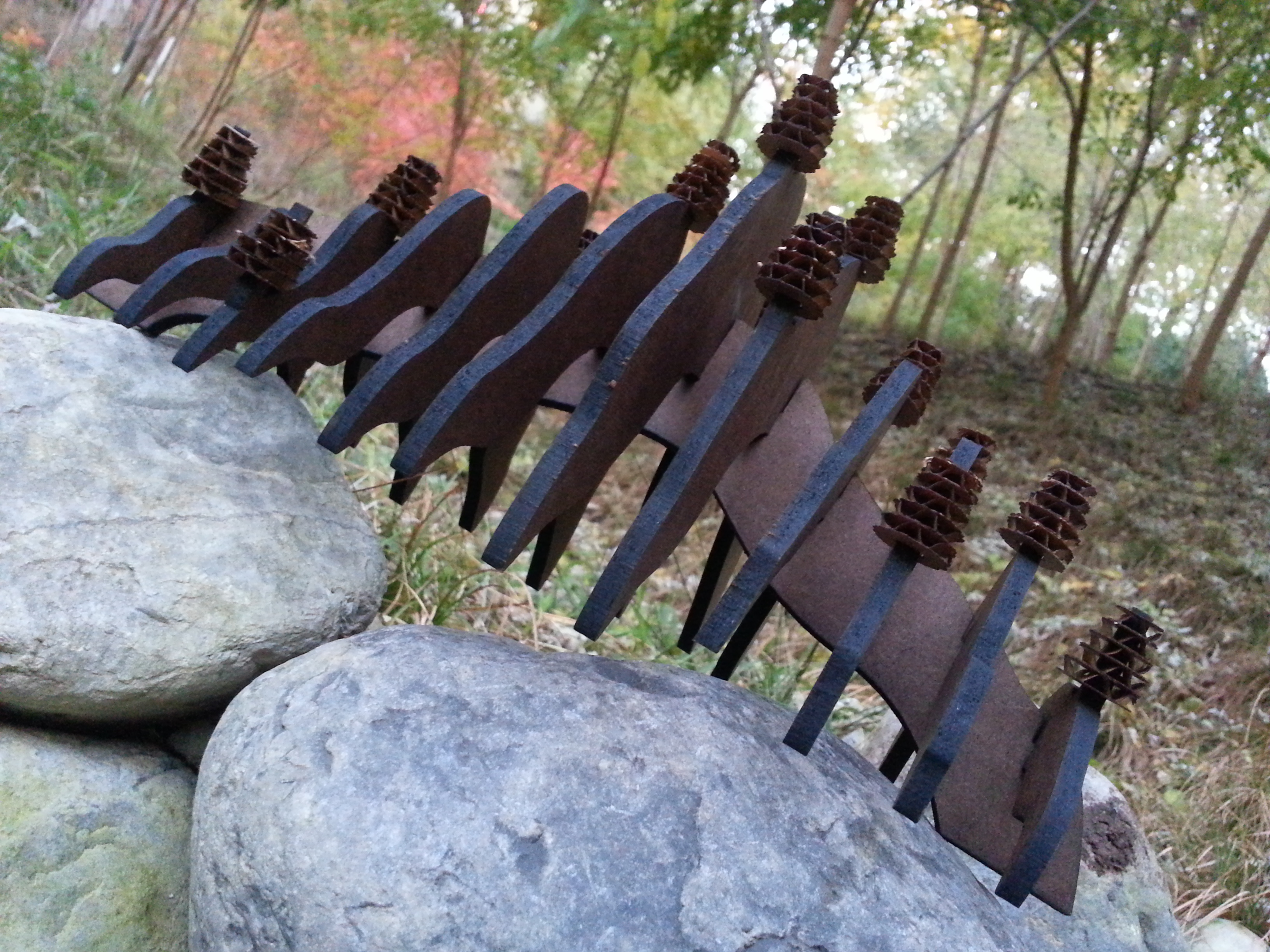Two Chairs and a Conversation Part 1, “State-of-the-Art Virus” by Miranda Jacoby (2013)
“State-of-the-Art Virus” is a conversation between a doctor and the first computer-augmented human to contract a digital virus. From mechanical prosthetics to neural implants, I think that humans are heading towards a physical synthesis with the technology we’ve come to depend on. Yet, this synthesis opens us up to a slew of new ailments, which may one day result in such a thing as prescription antivirus. Additionally, there’s an interesting parallel in the fact that malware infections in medical equipment has become a big problem in recent years.
The doctor’s chair has a straight back and a professional appearance, with slight, soft curves to suggest an organic element. The patient’s chair is a corrupted version of the doctor’s chair, whose warped effect was inspired by a distorted cabinet designed by Italian designer Ferruccio Laviani. Due to it’s viral nature, the patent’s chair is not meant to be interacted with. In the final design, both chairs will have another pair of support beams closer to the bottom of the legs to increase stability.
As for the setting, I was looking for something minimalist, well lit, and sterile. Yet, I was captivated by the paint splatters in this alcove and the rust stains on the staircase, as they incorporate the chaotic entity of the virus into an otherwise clean environment. This location is meant to be a secluded corner of a hospital, where the doctor and patient anxiously discuss what can be done to combat this new ailment.
